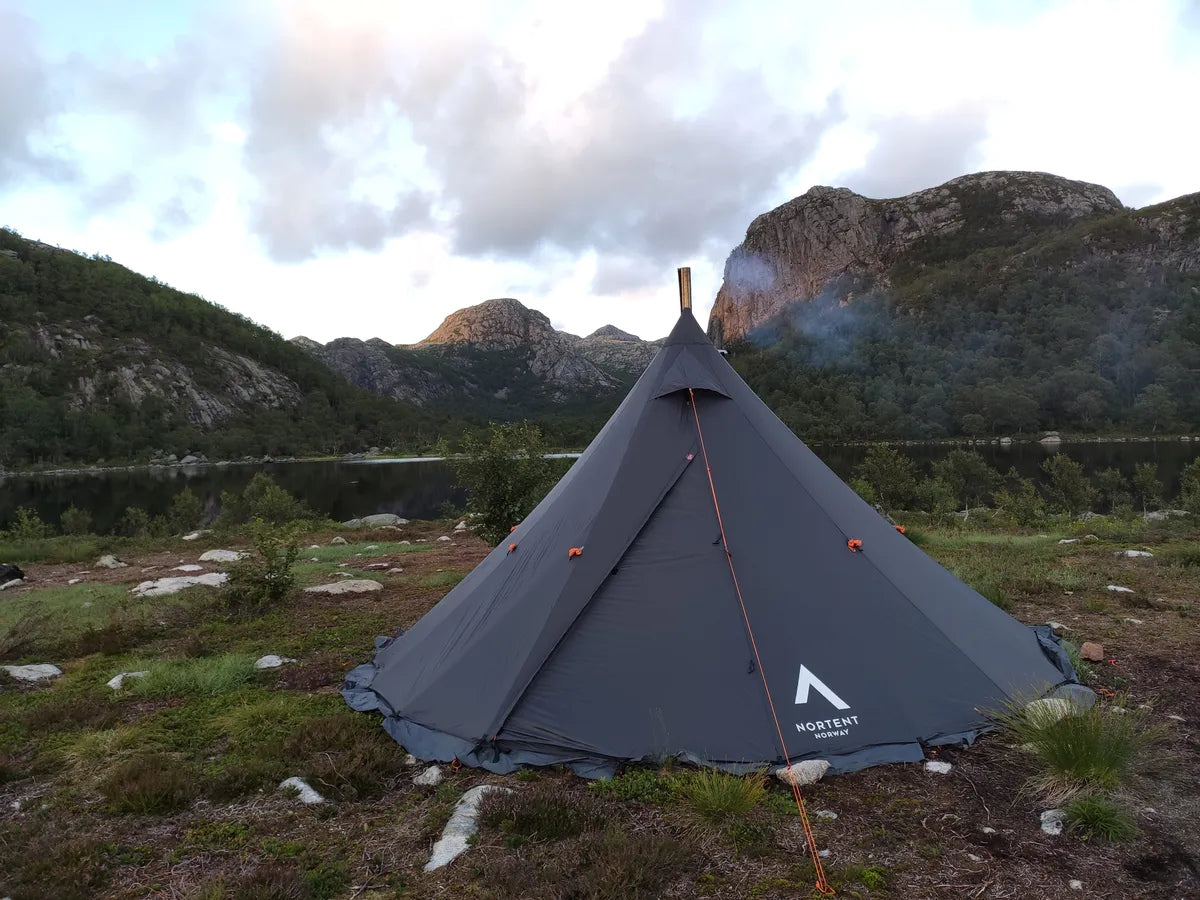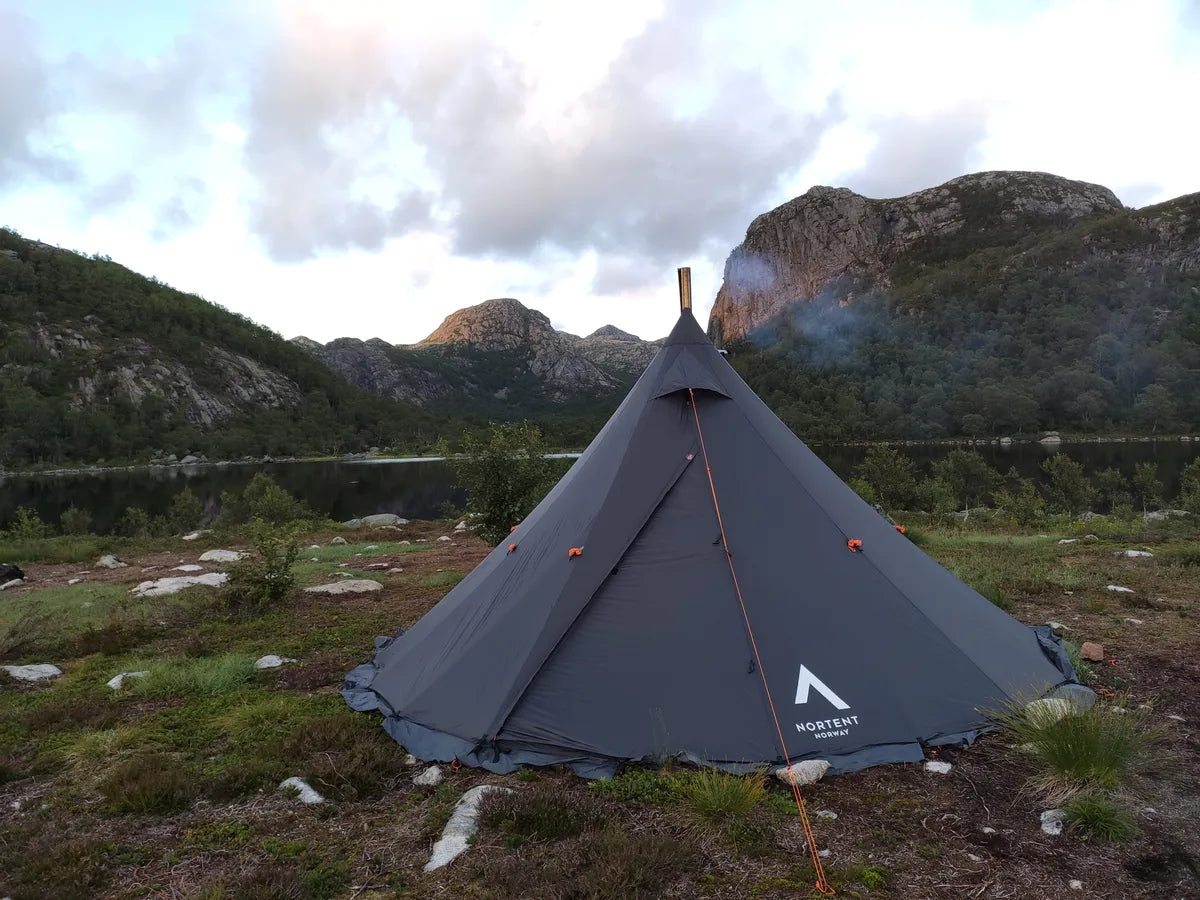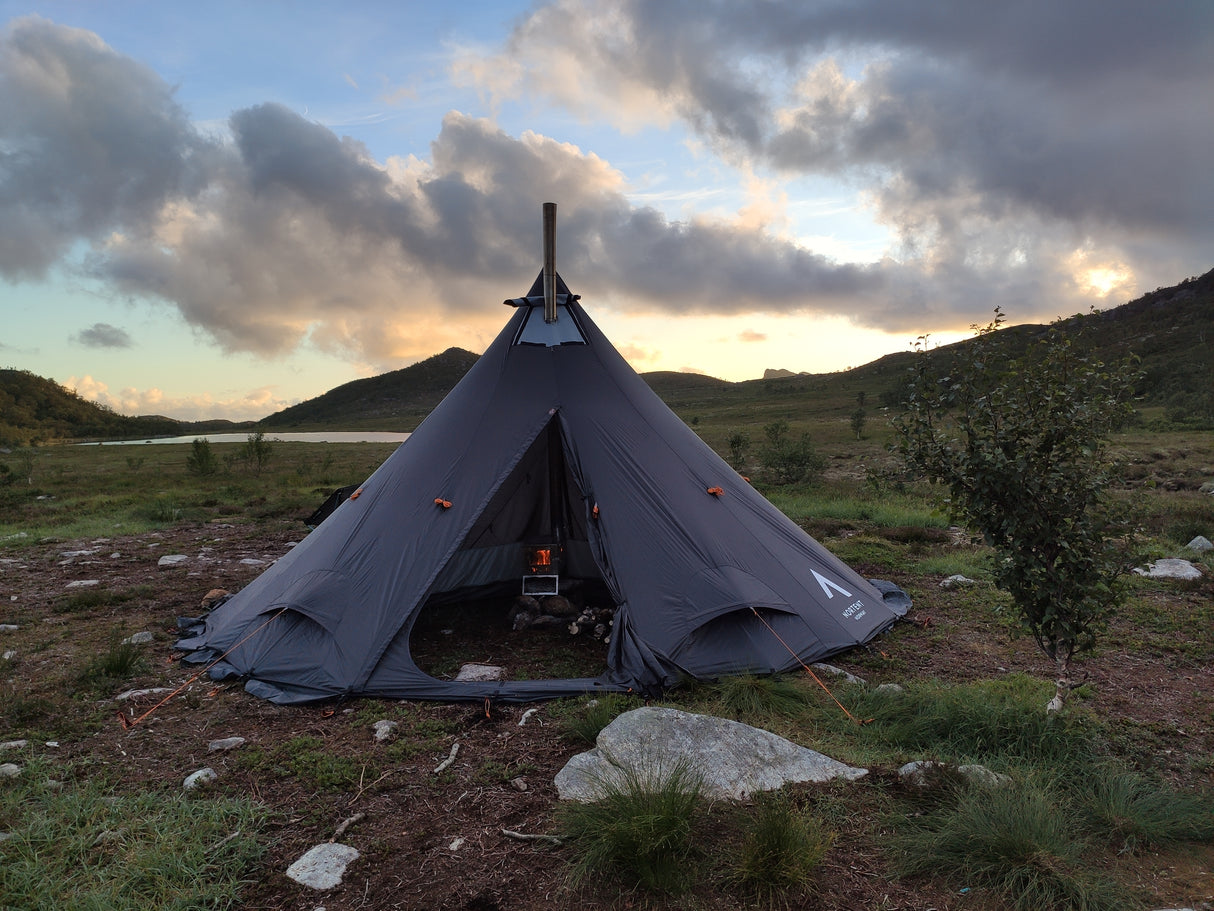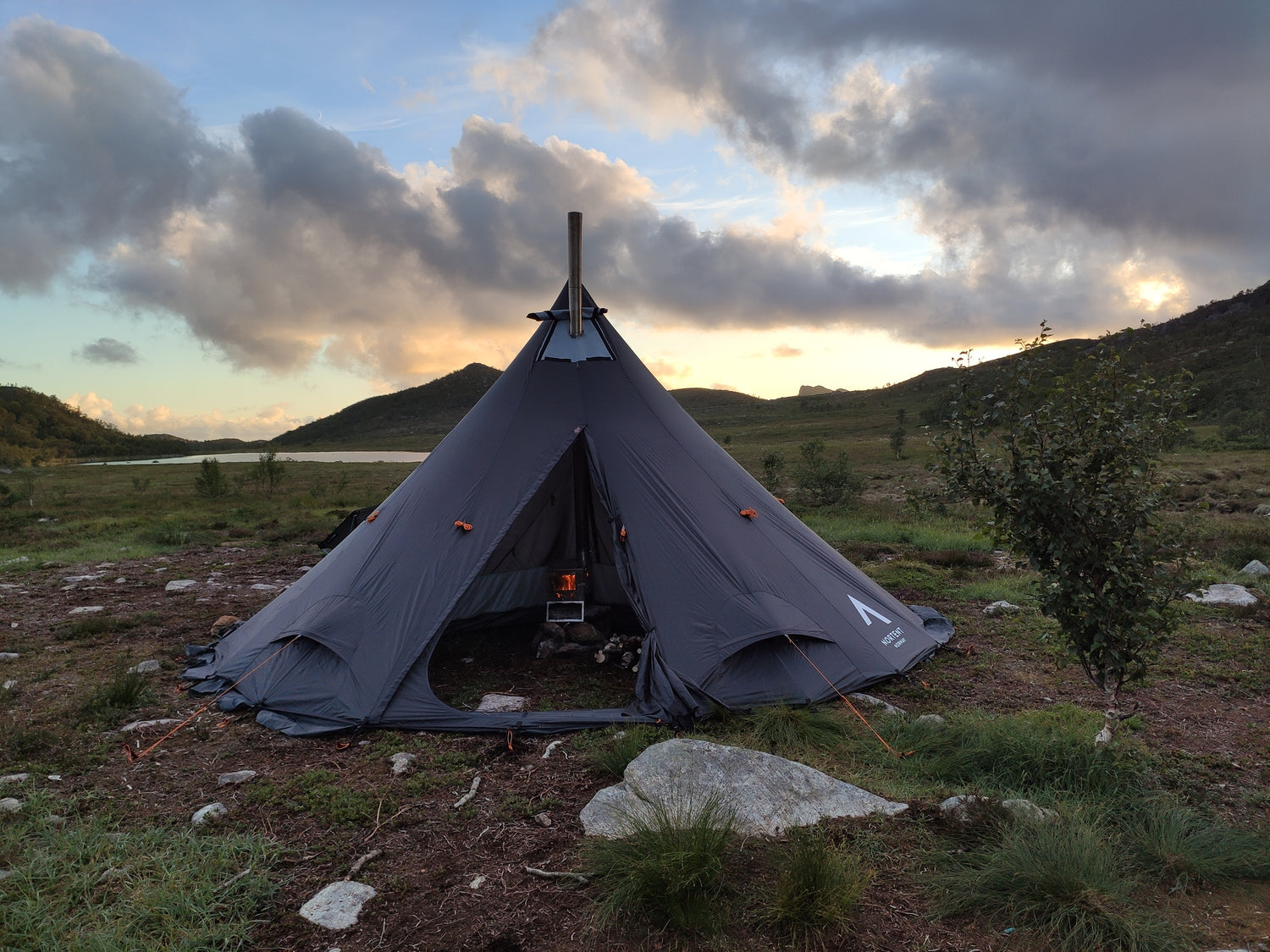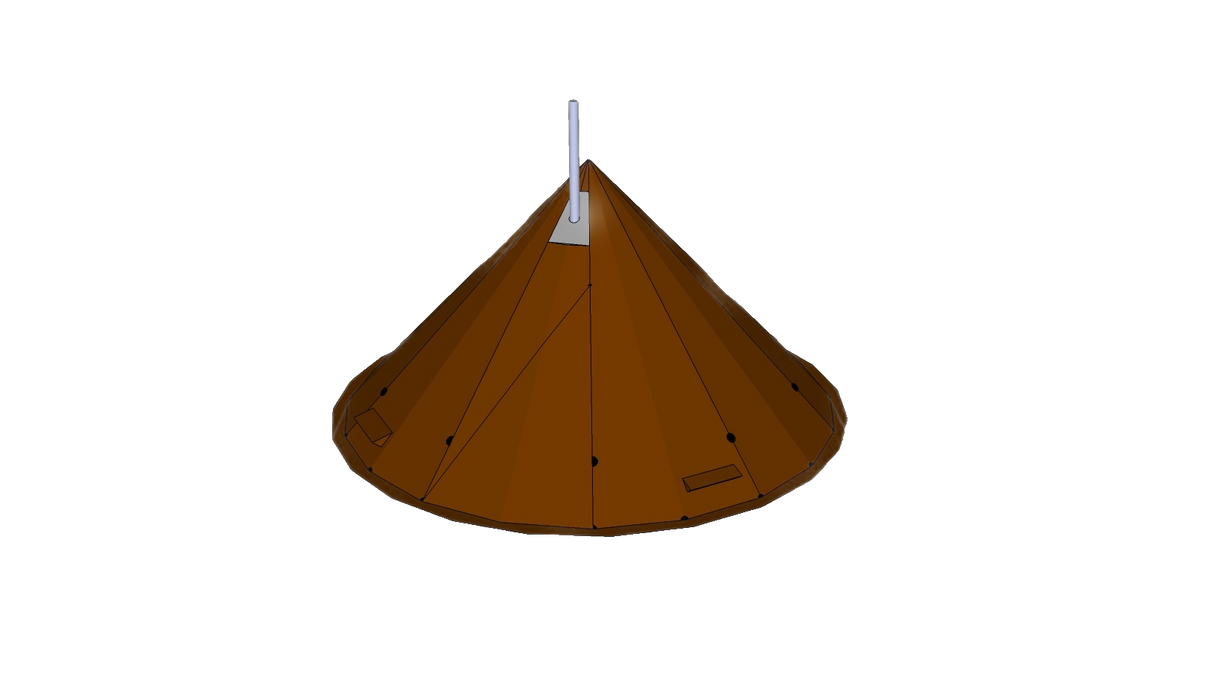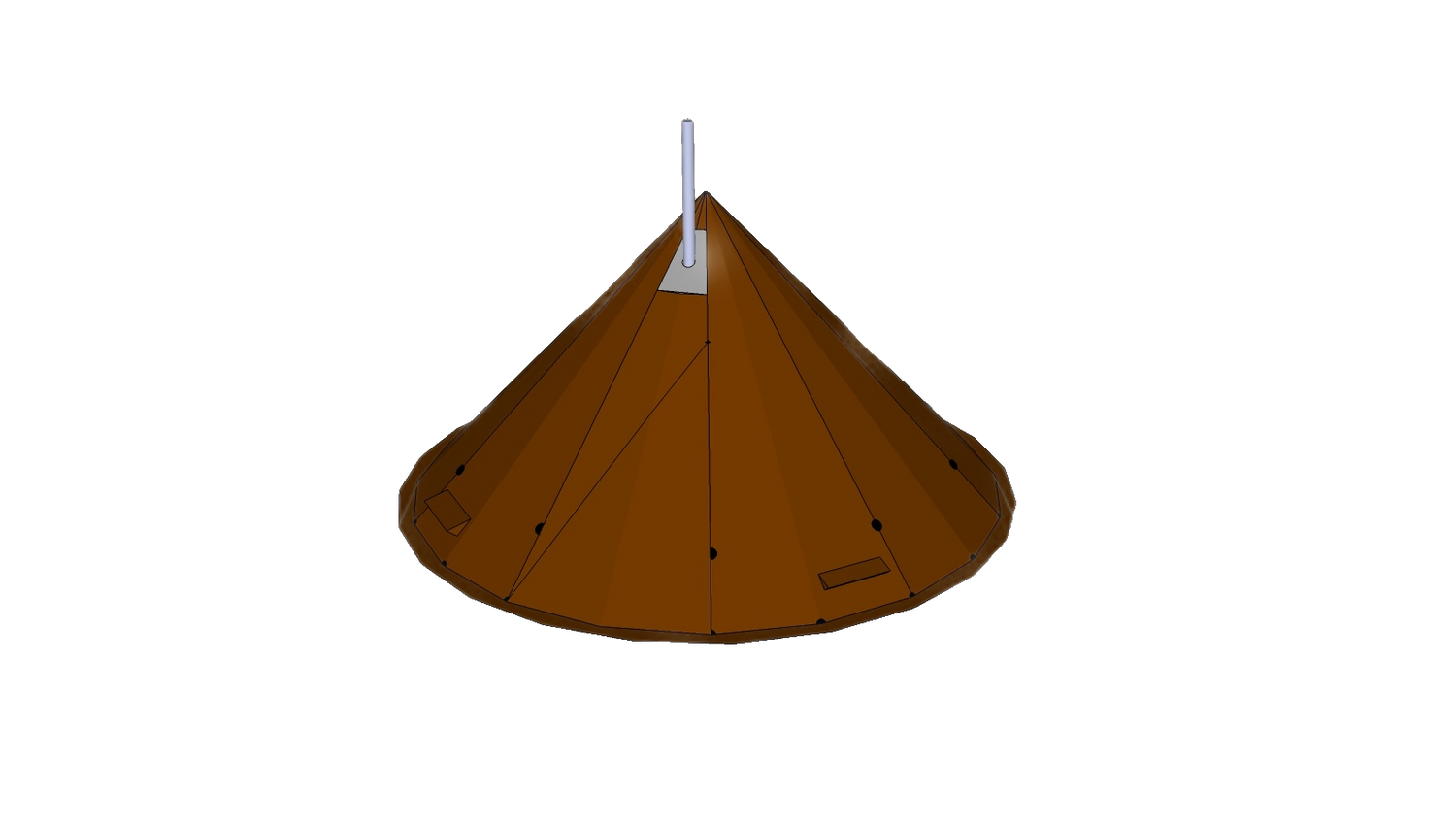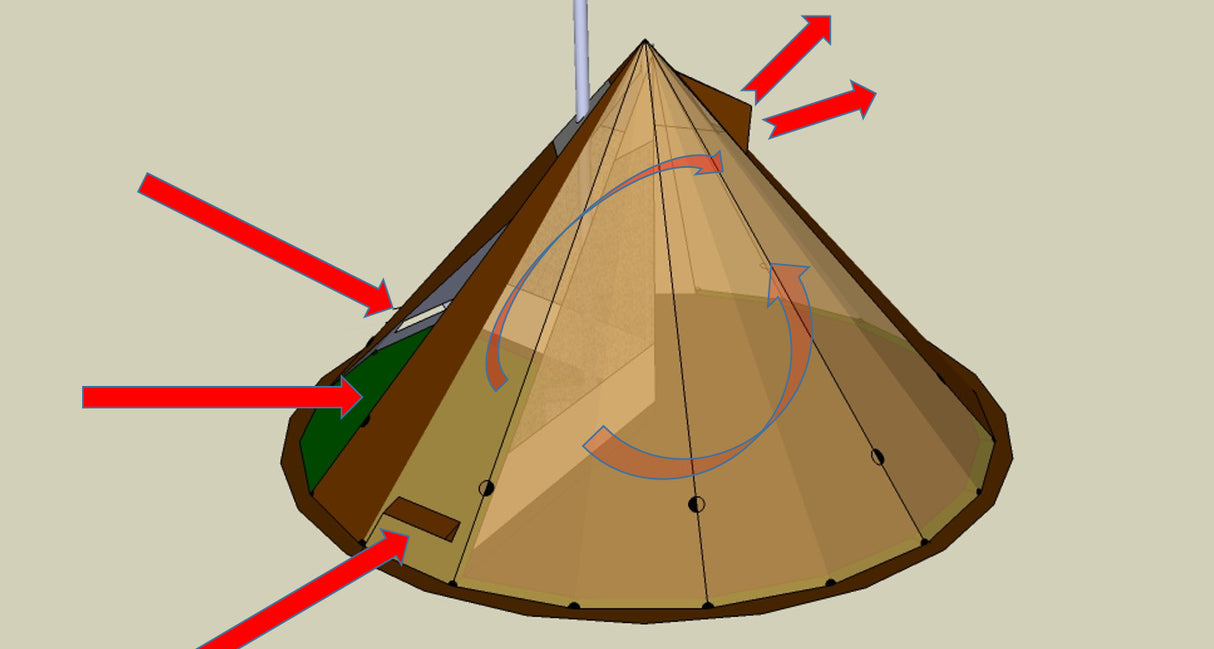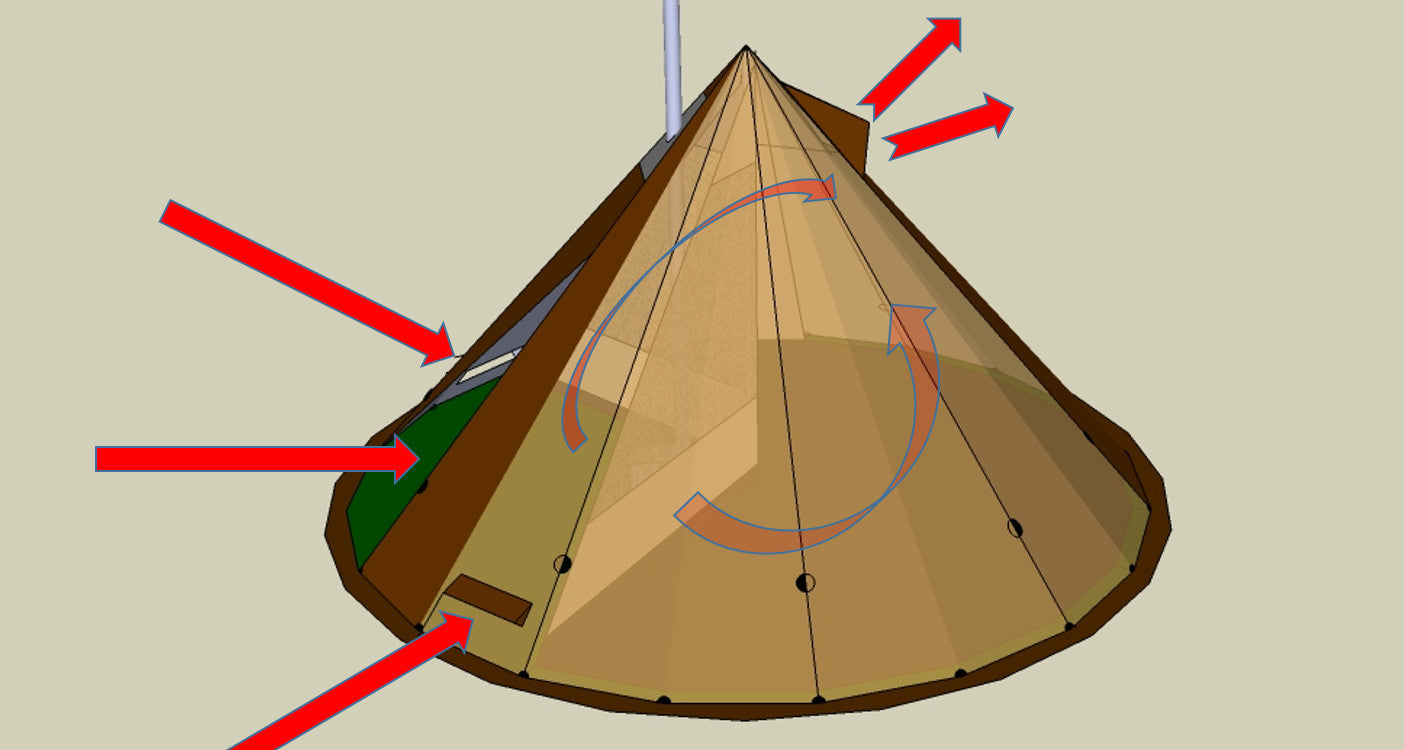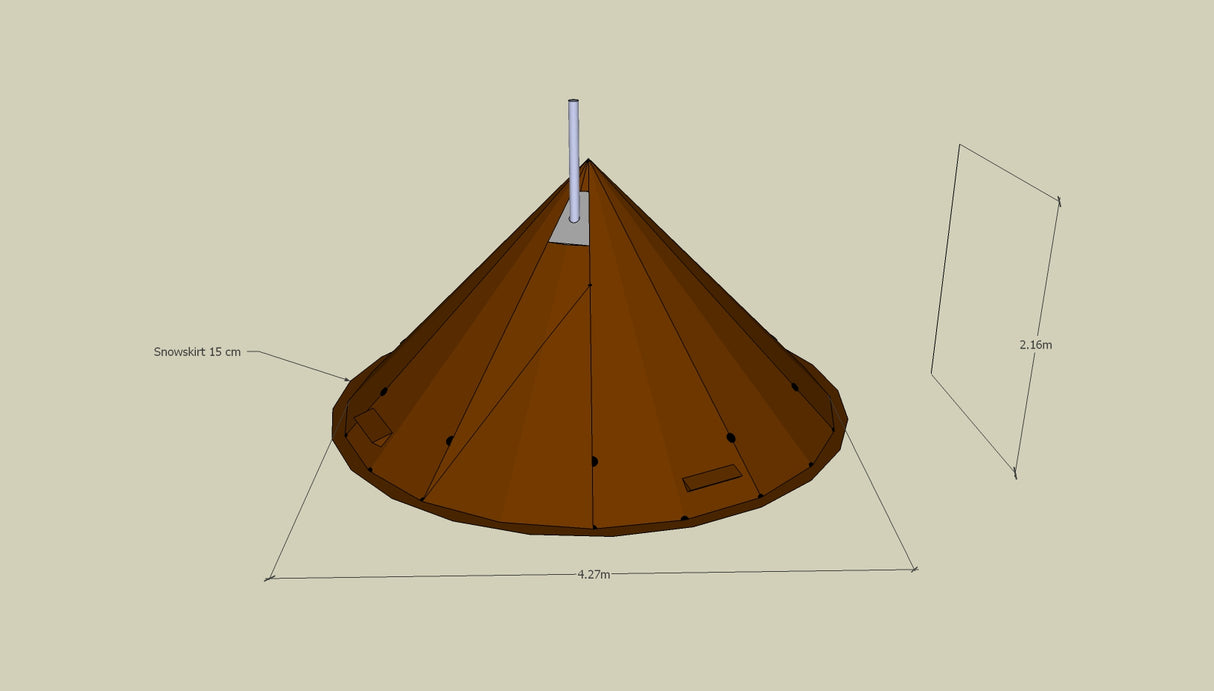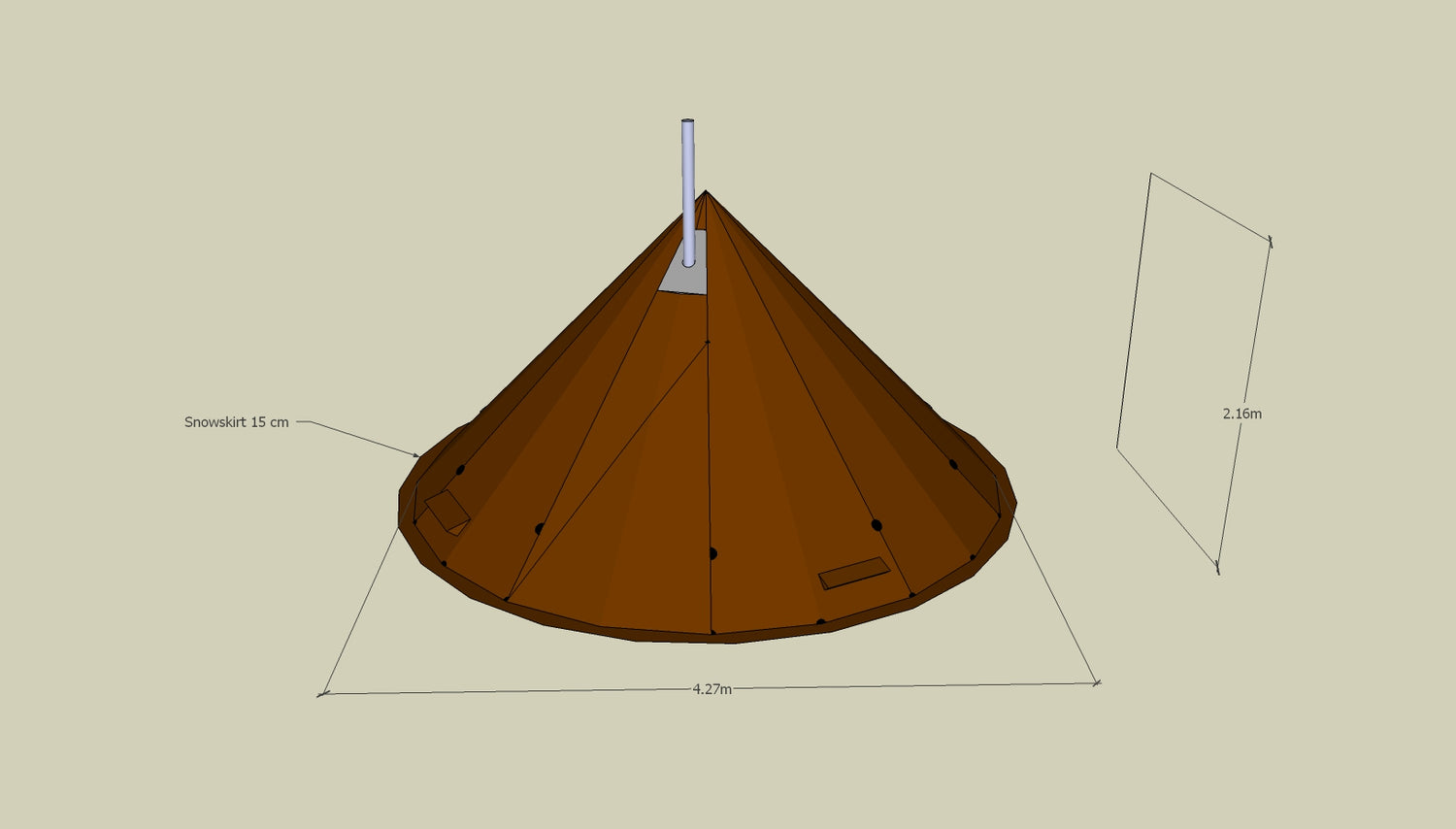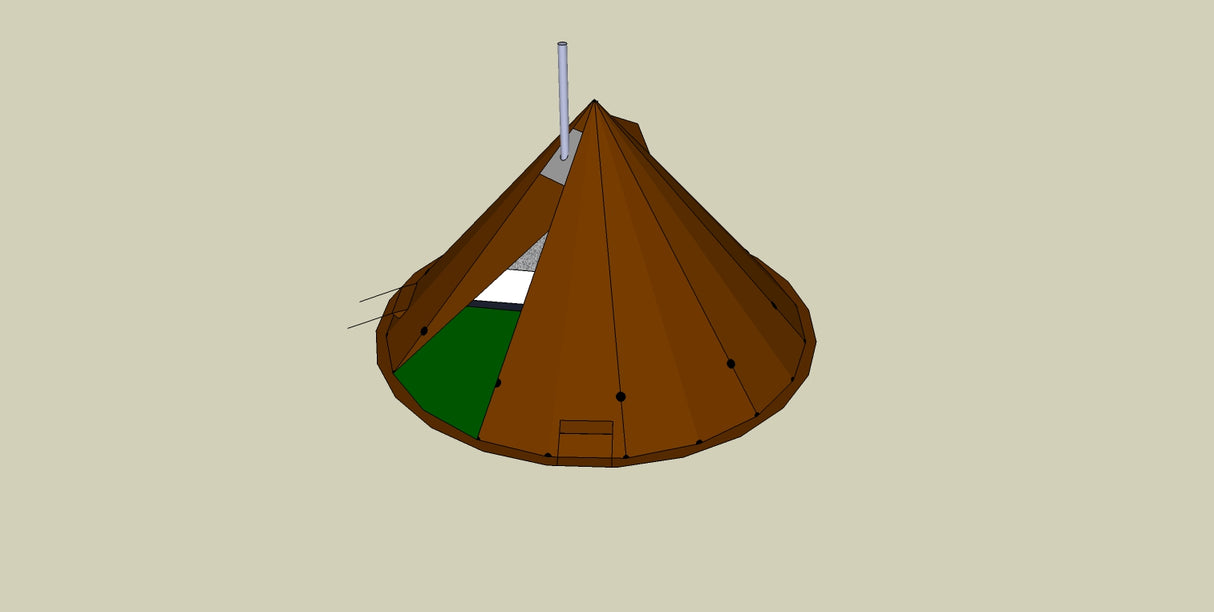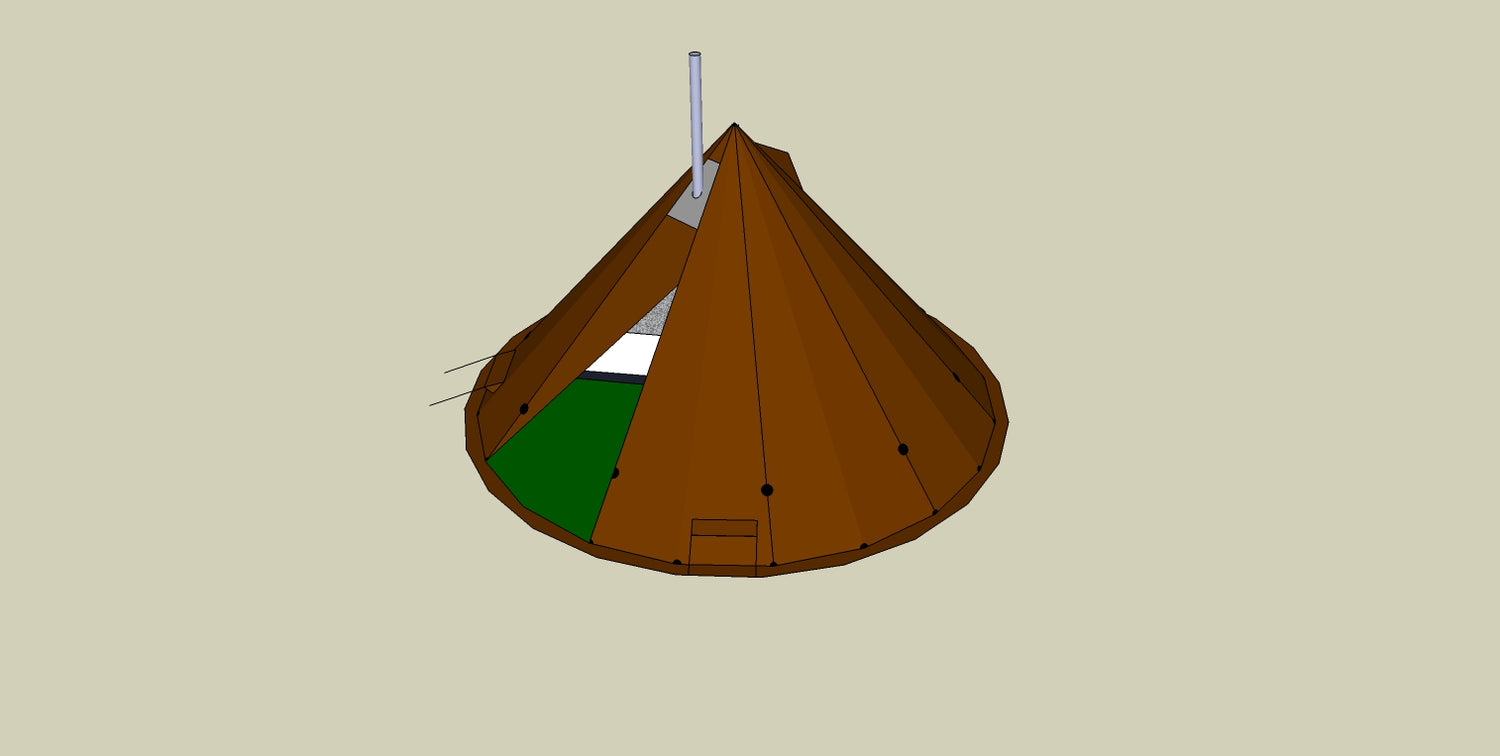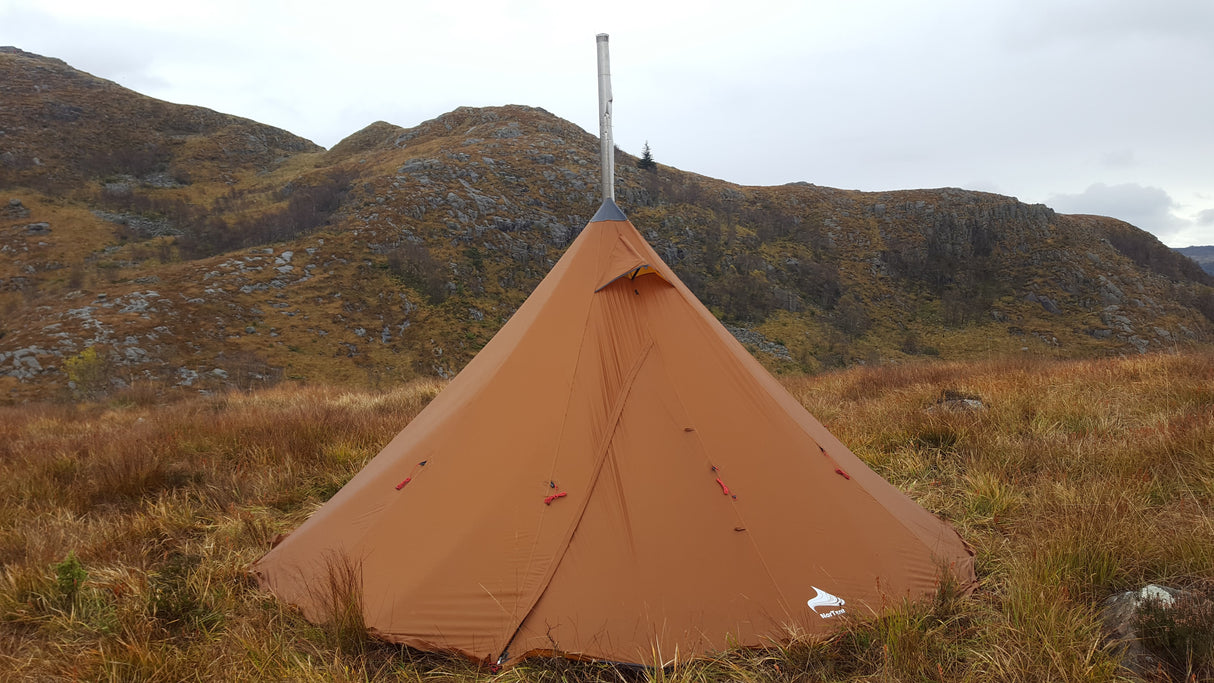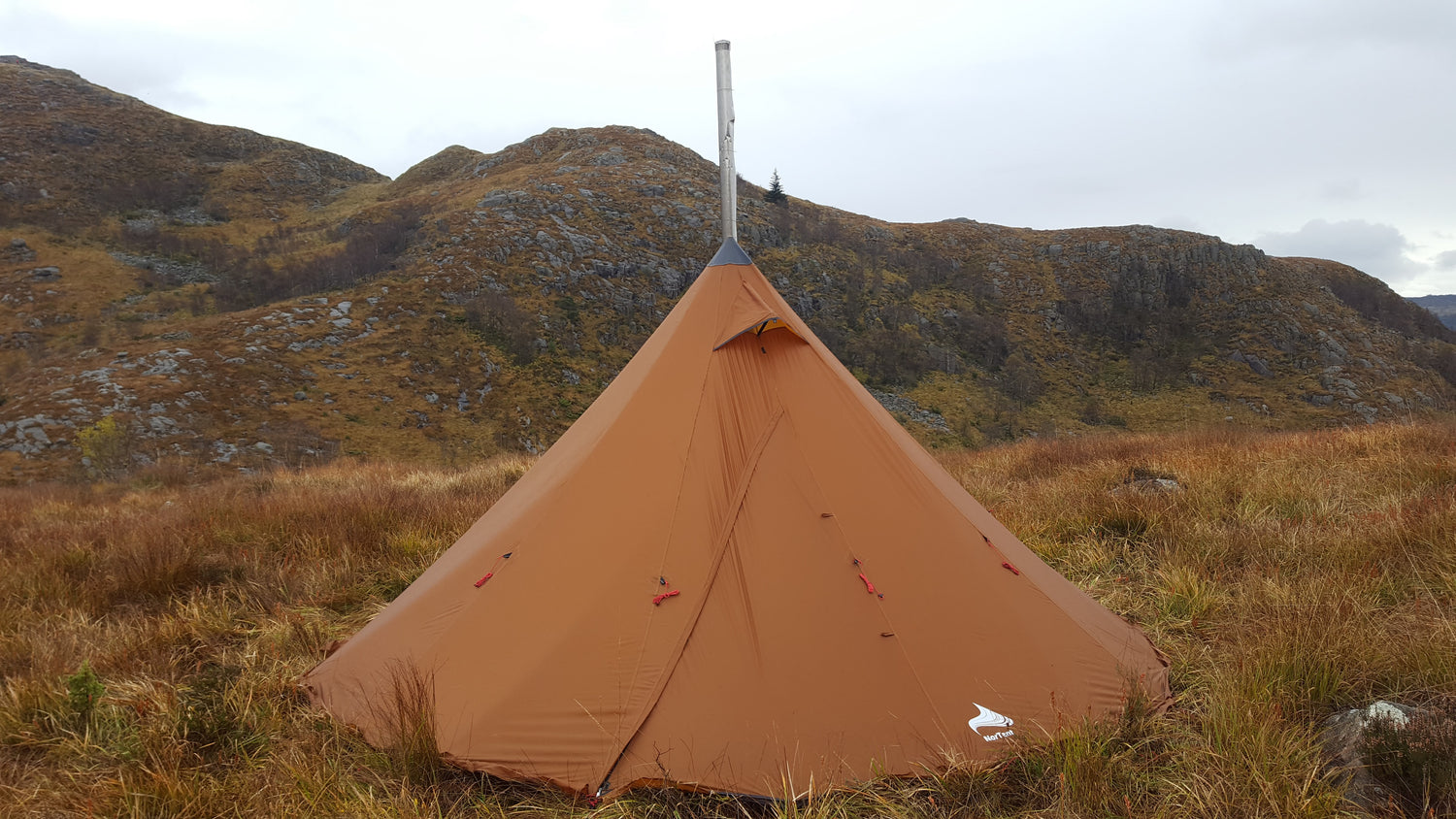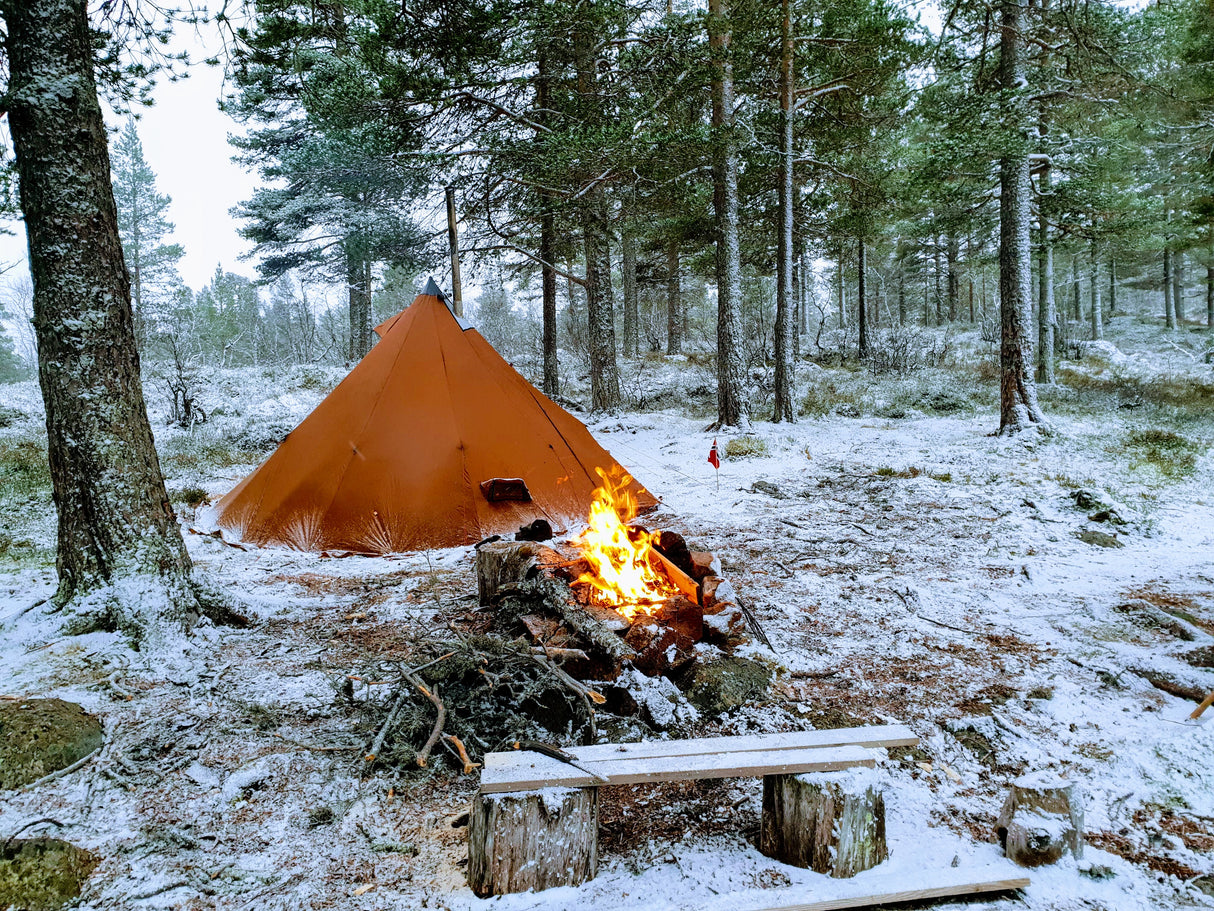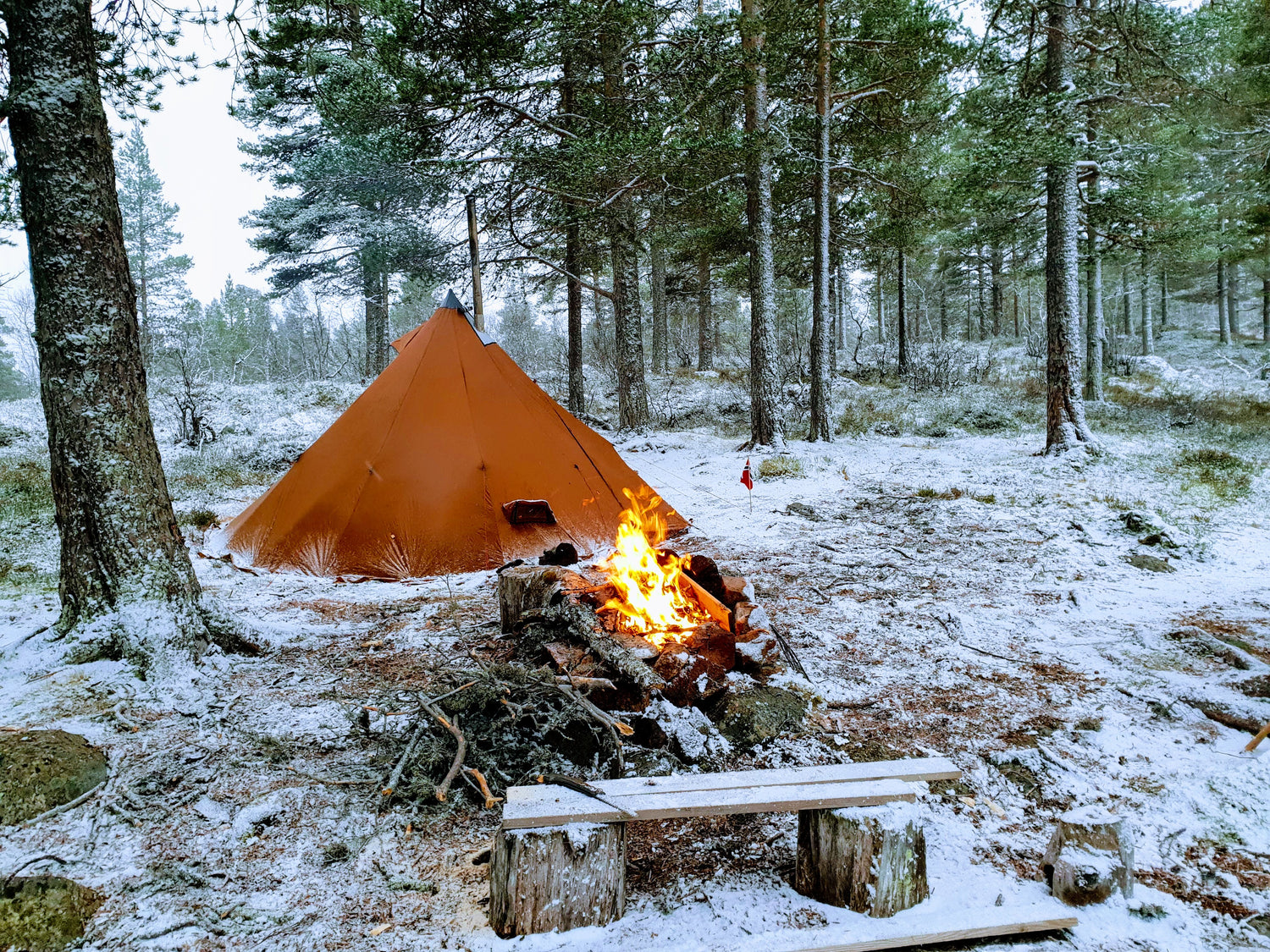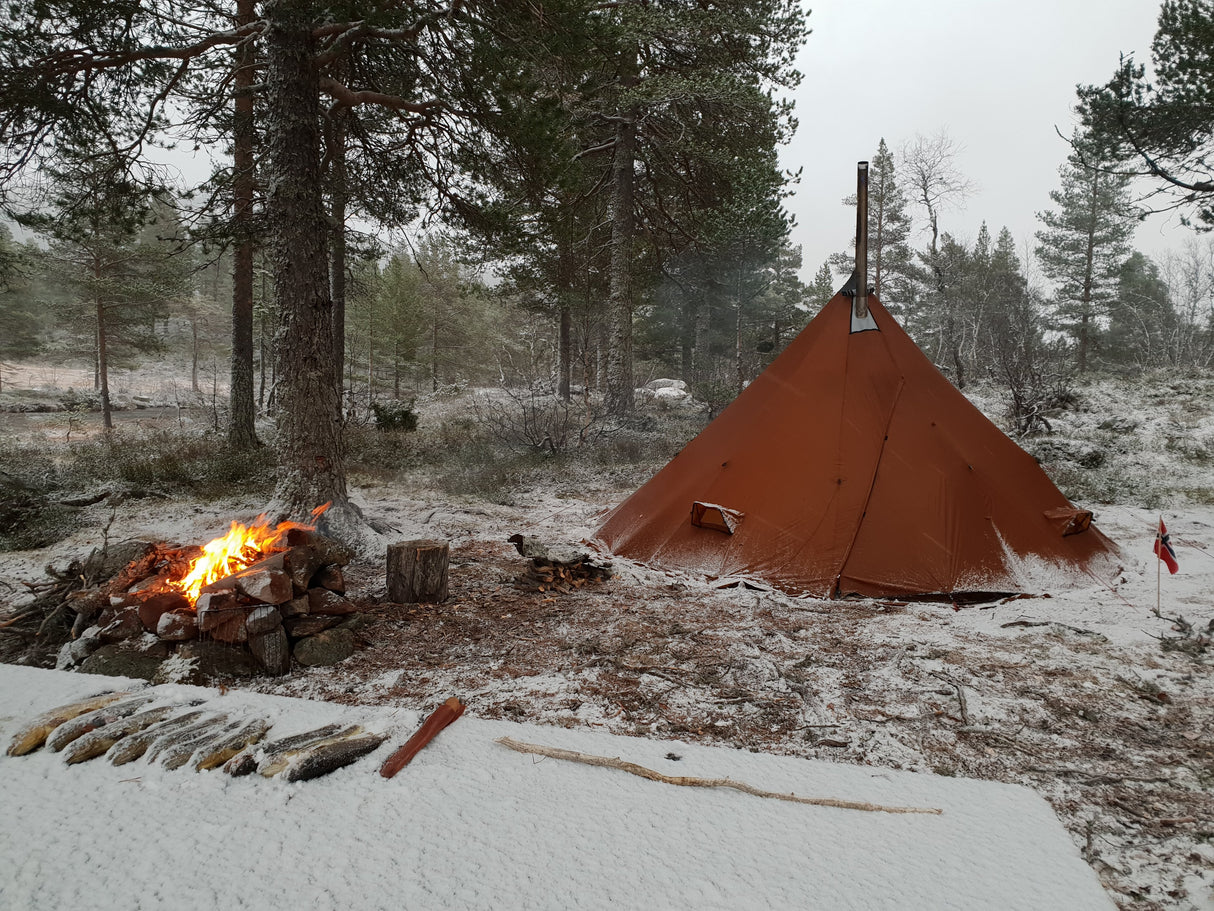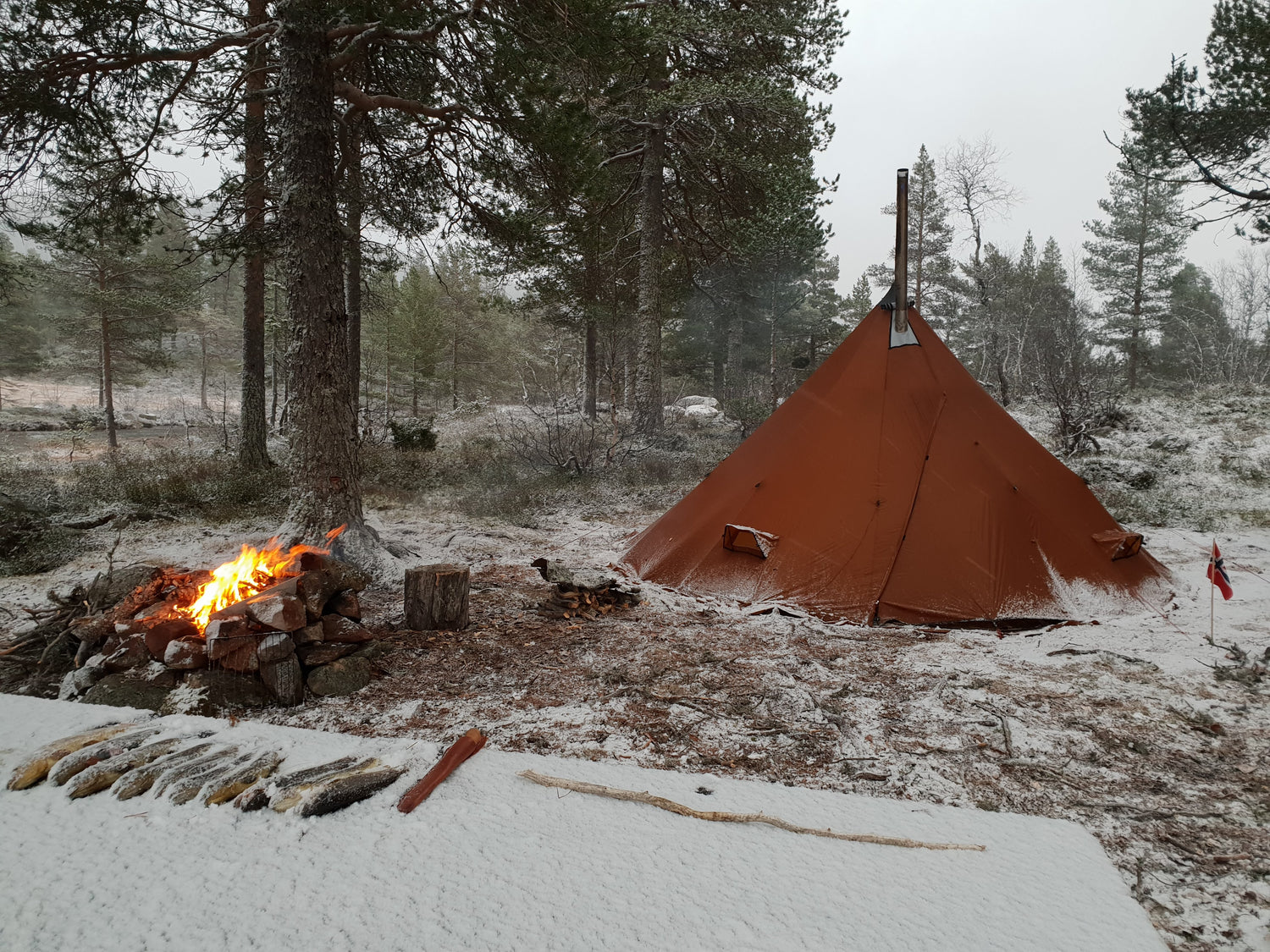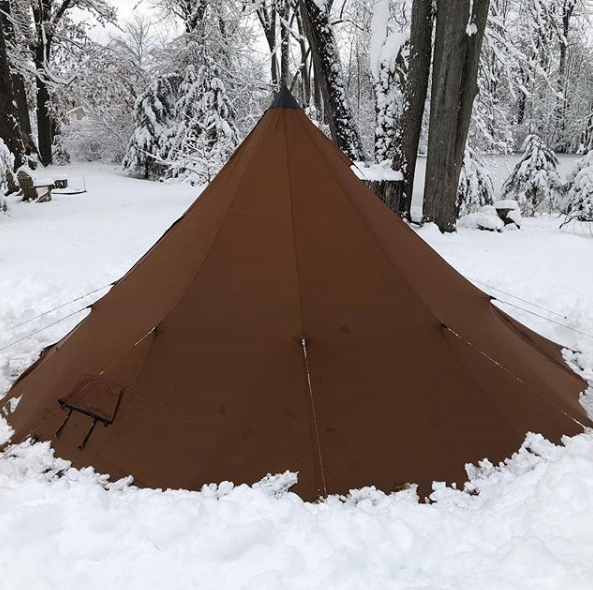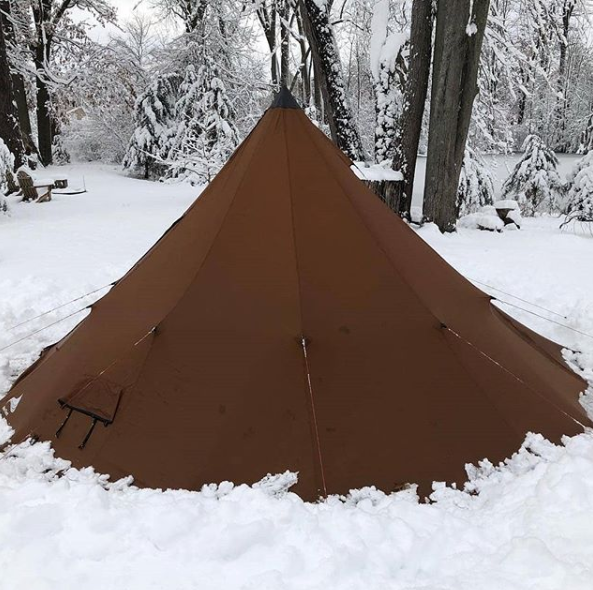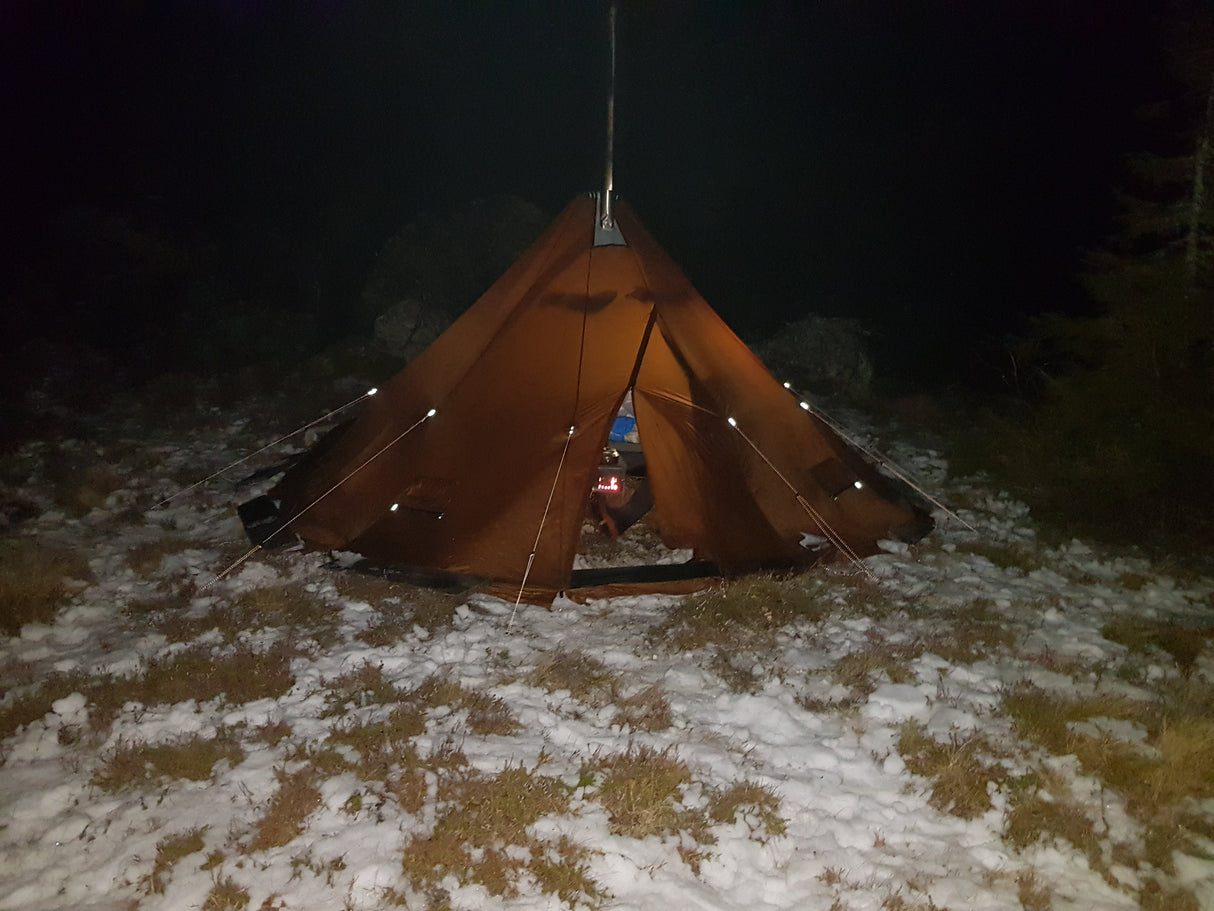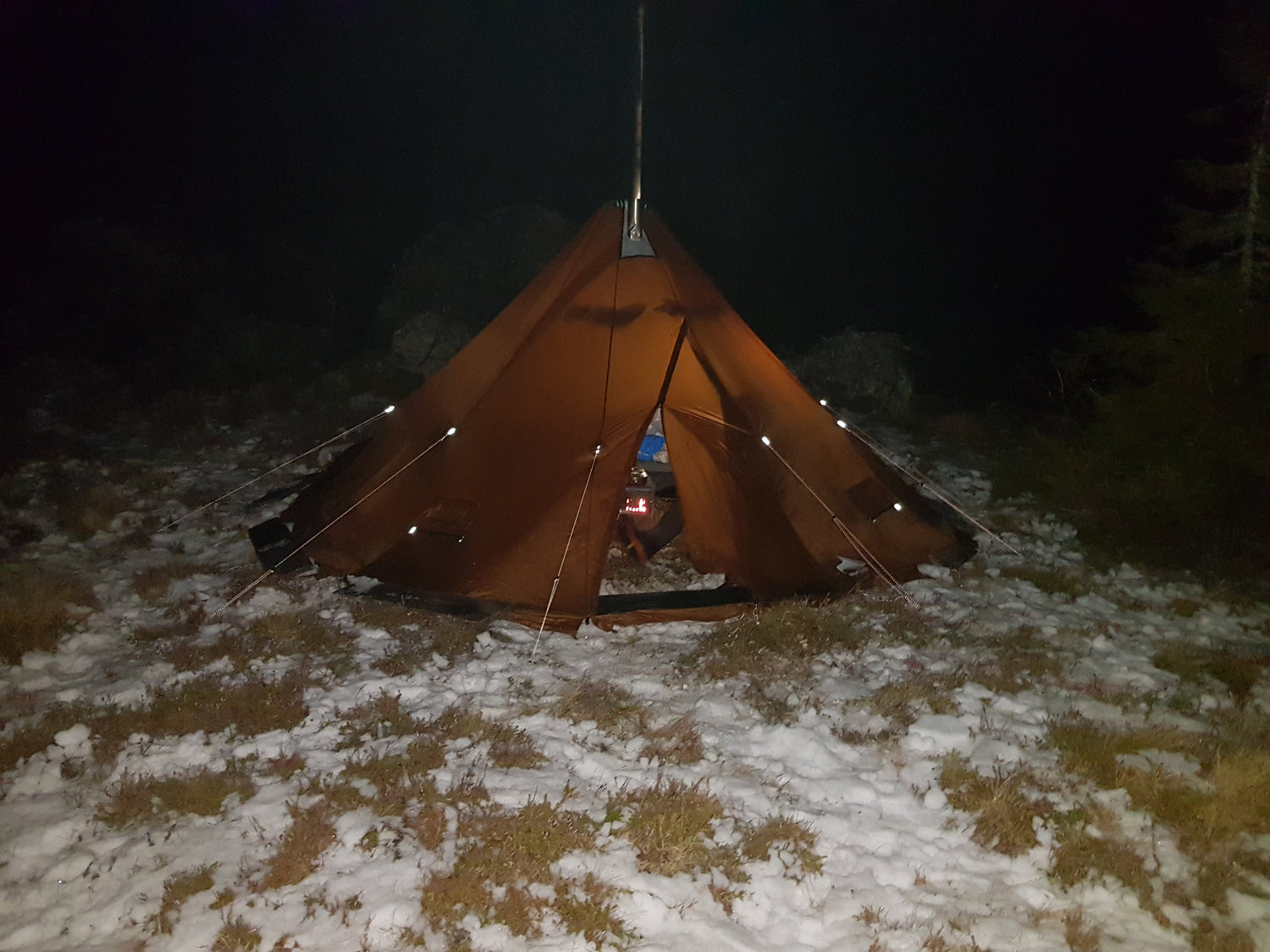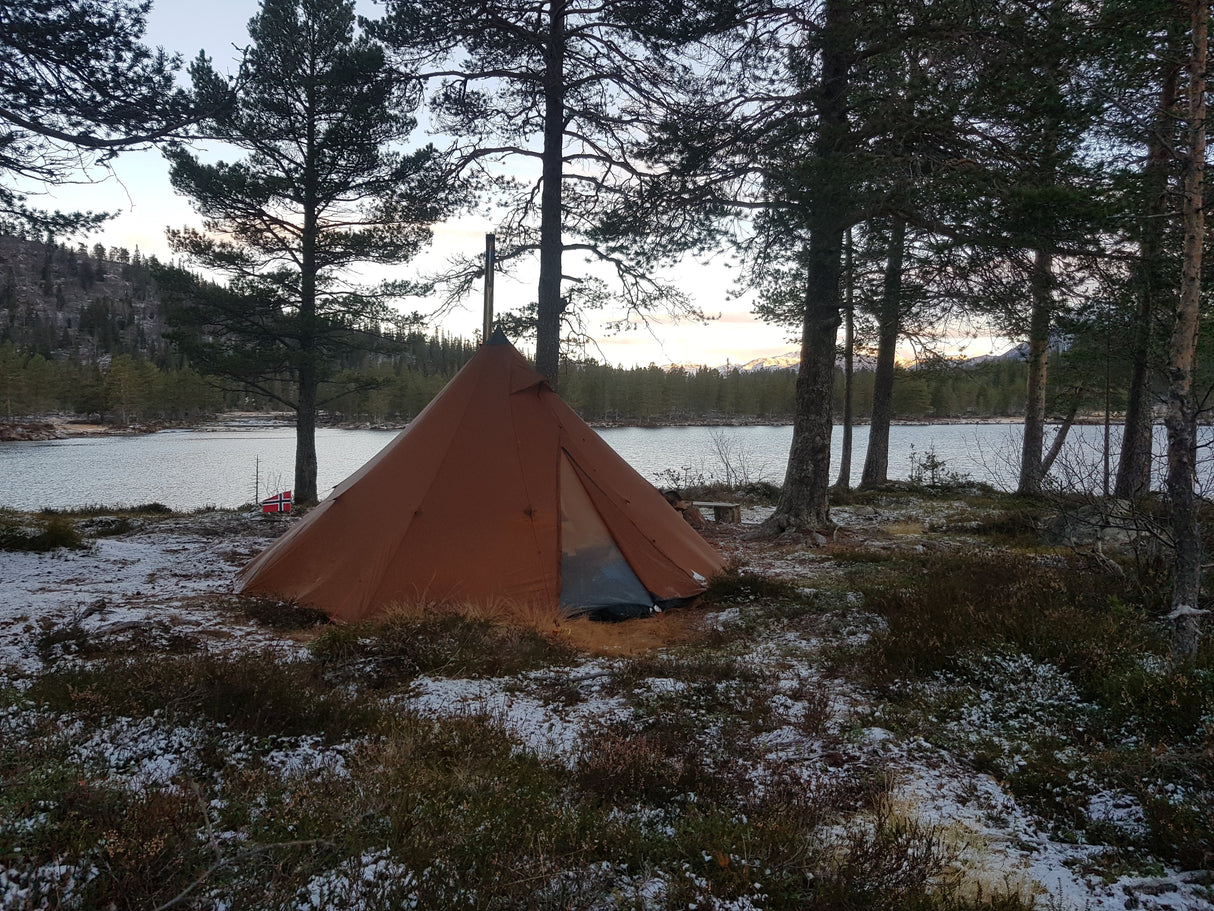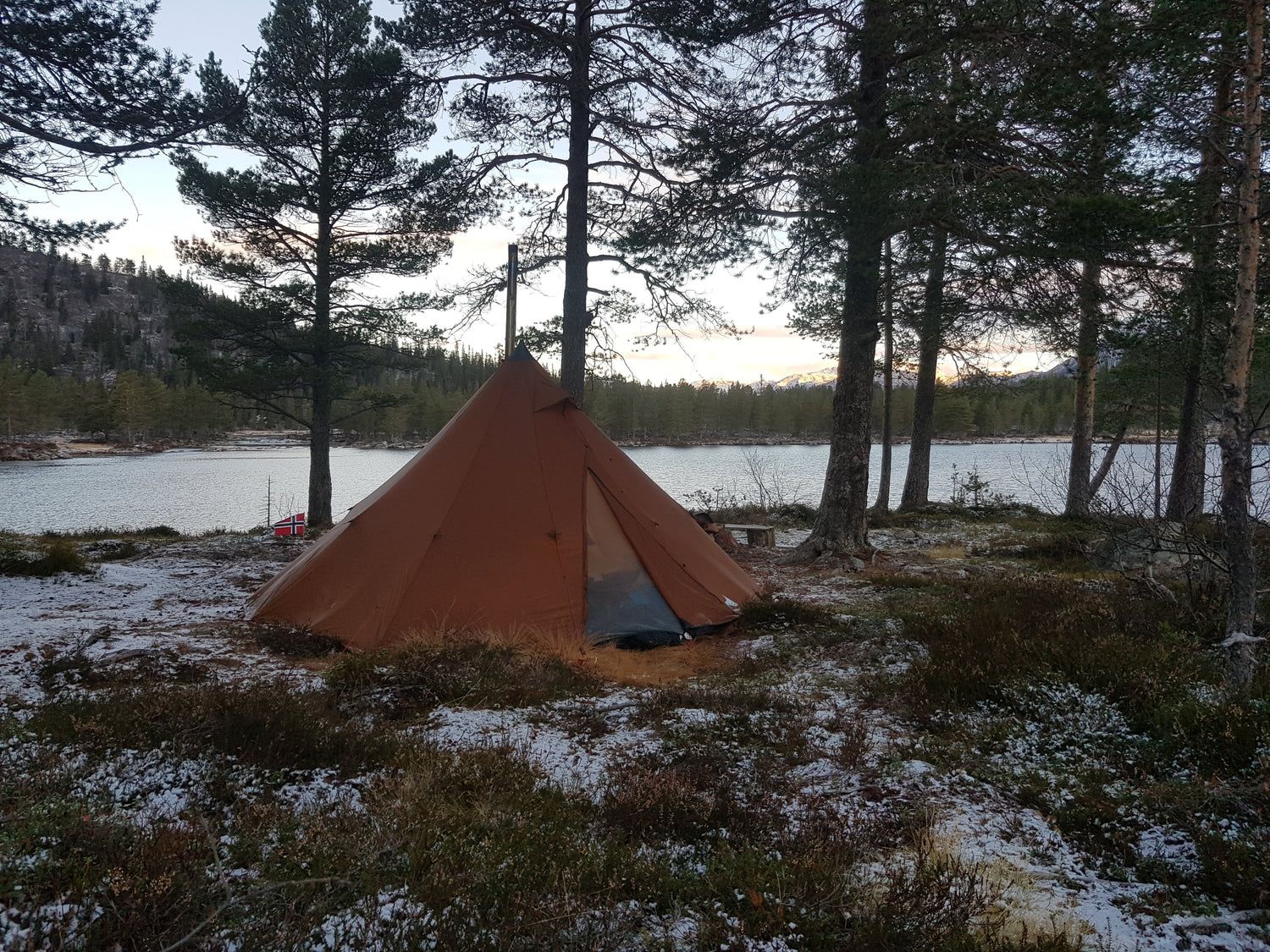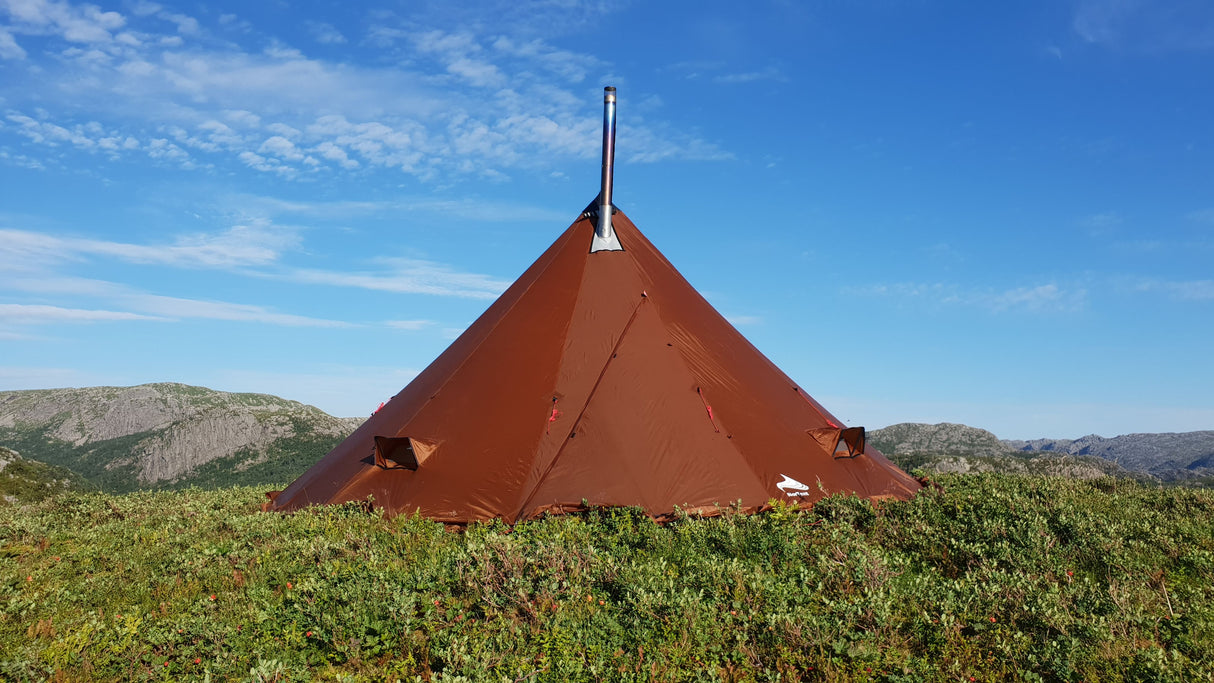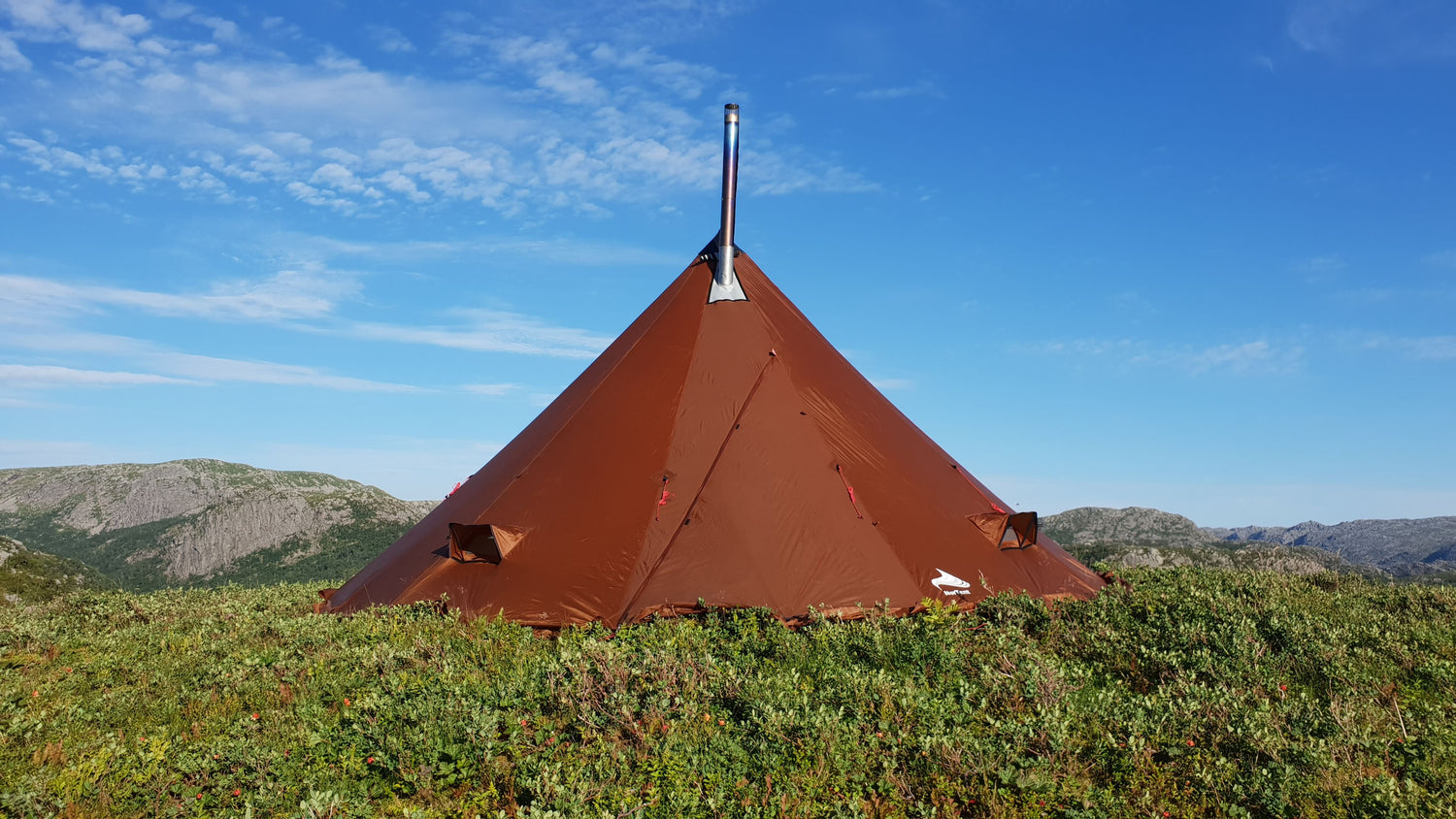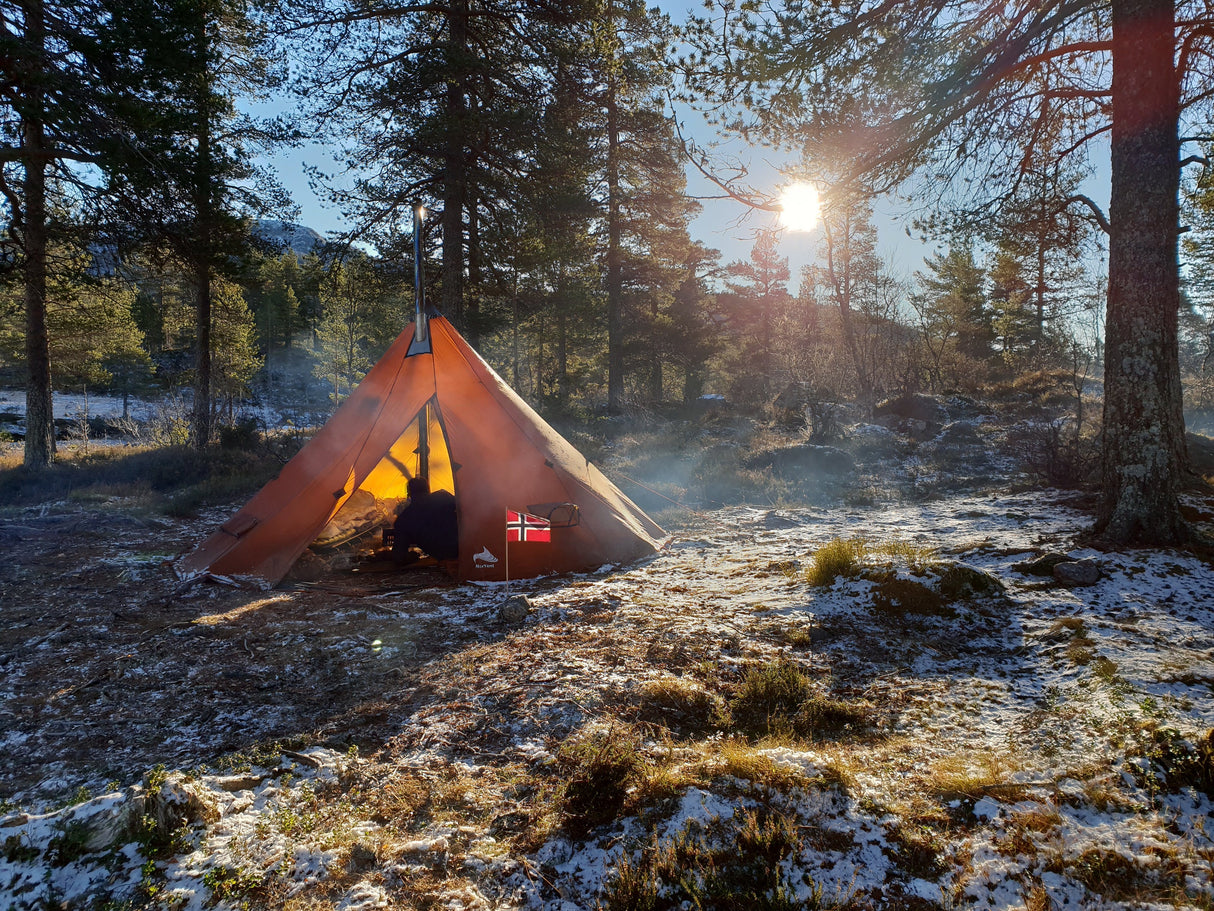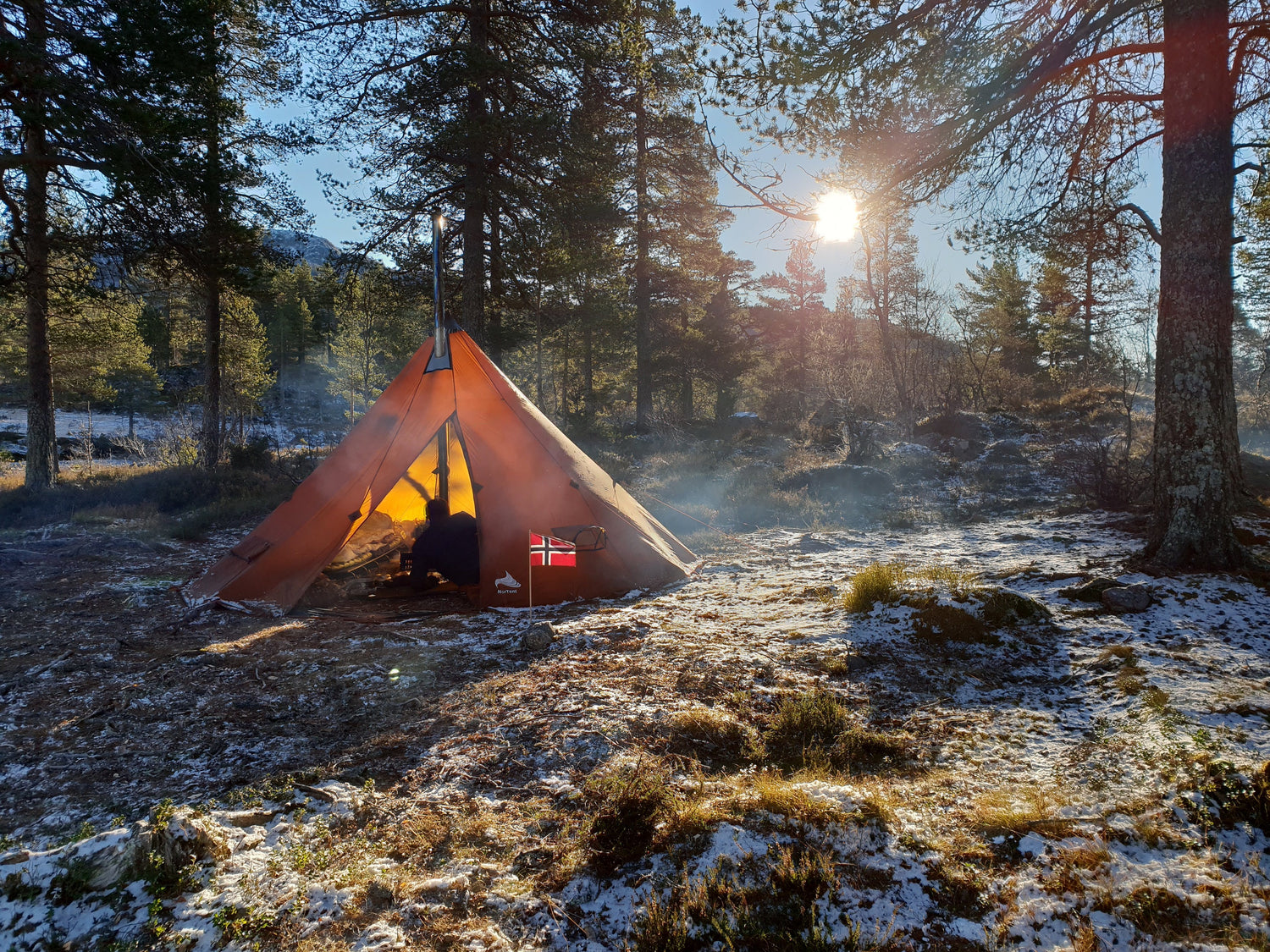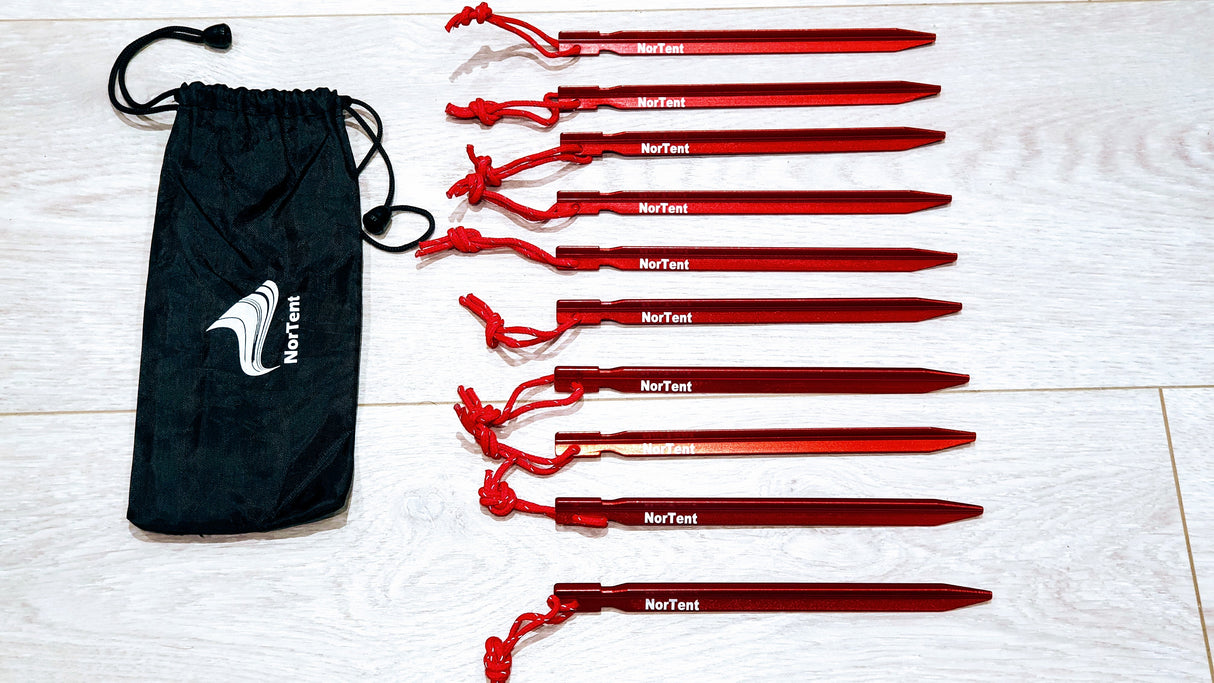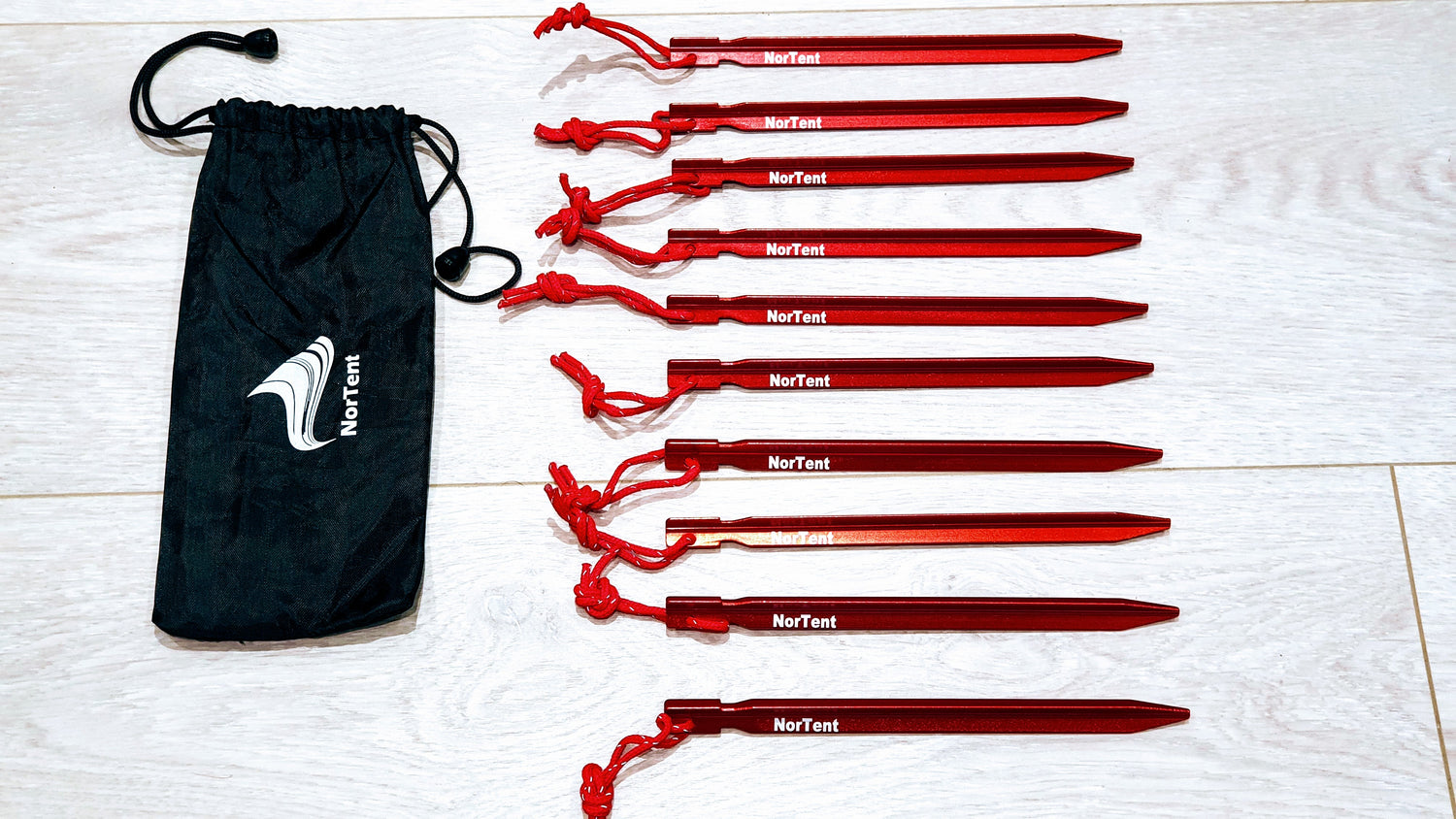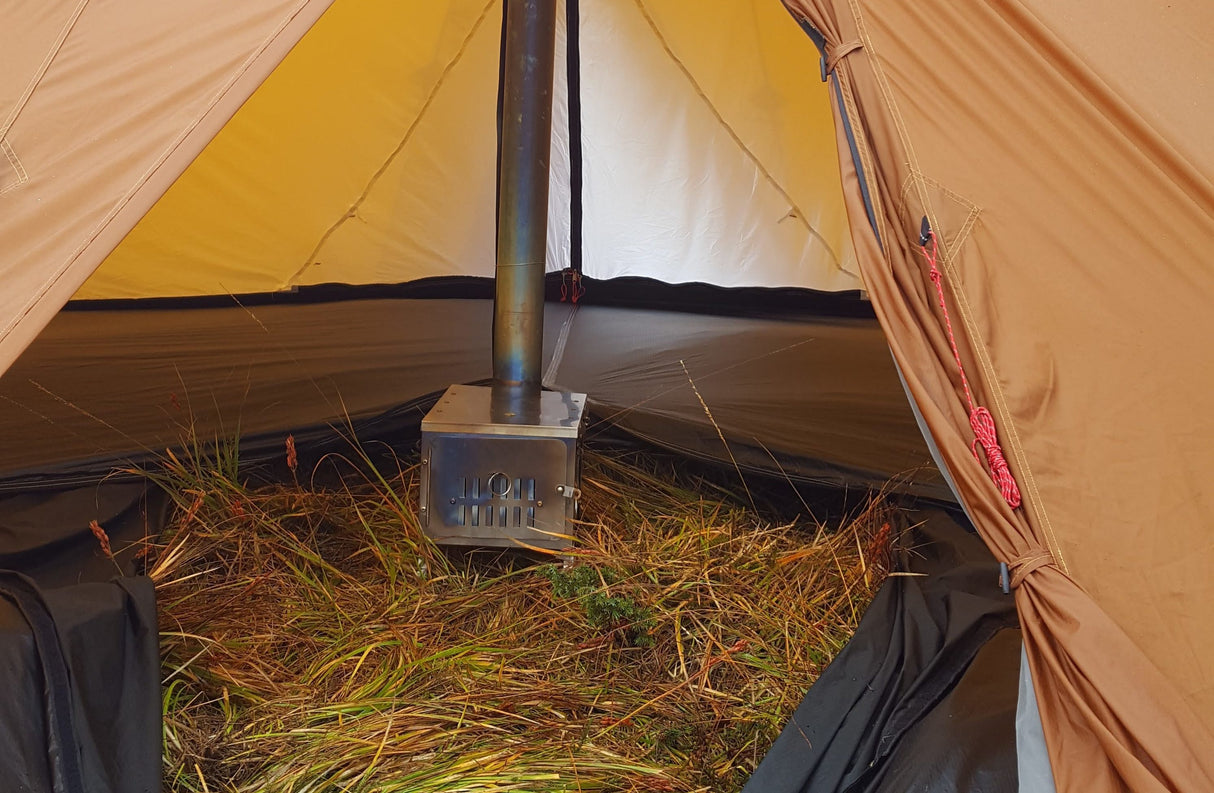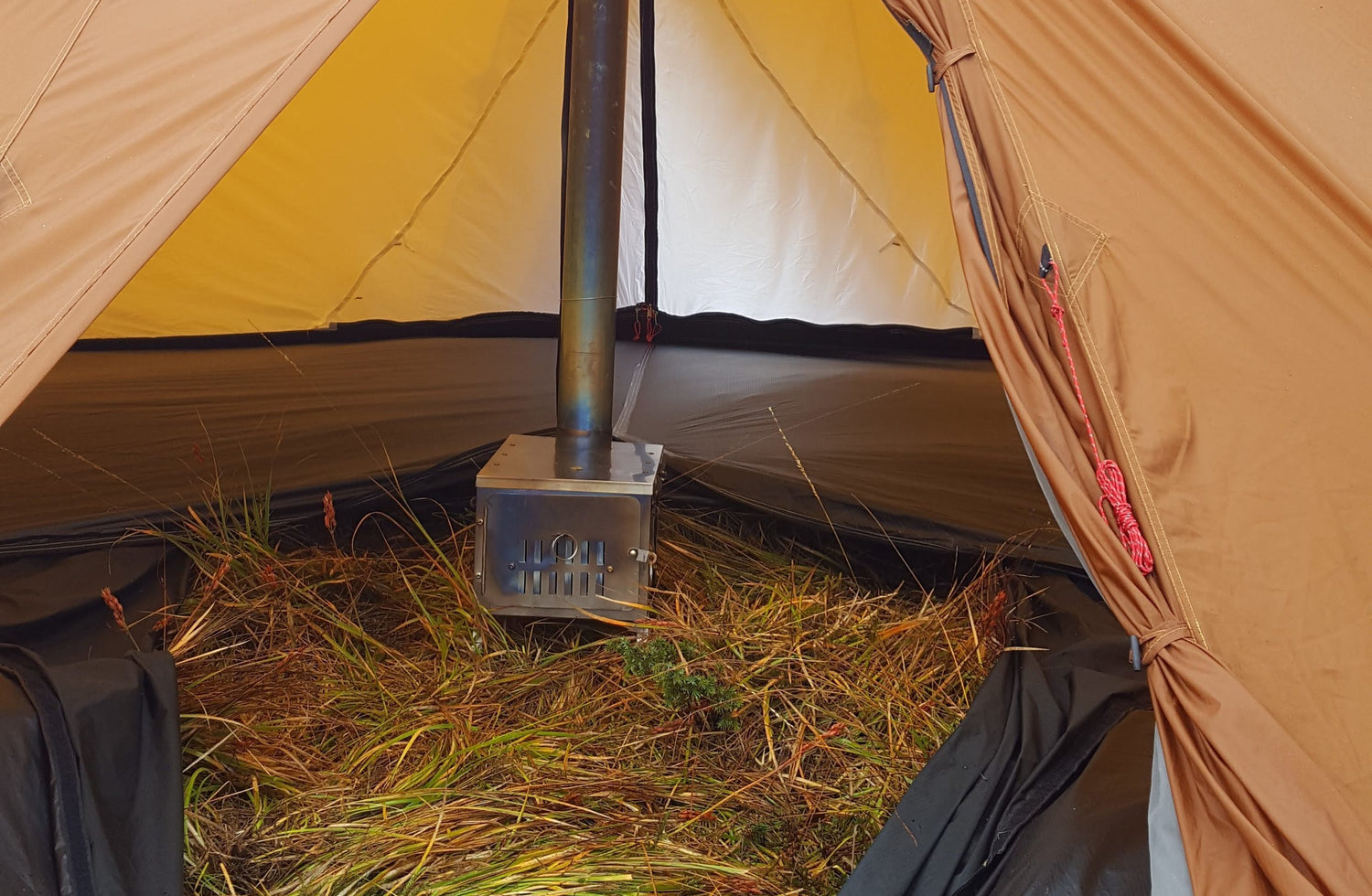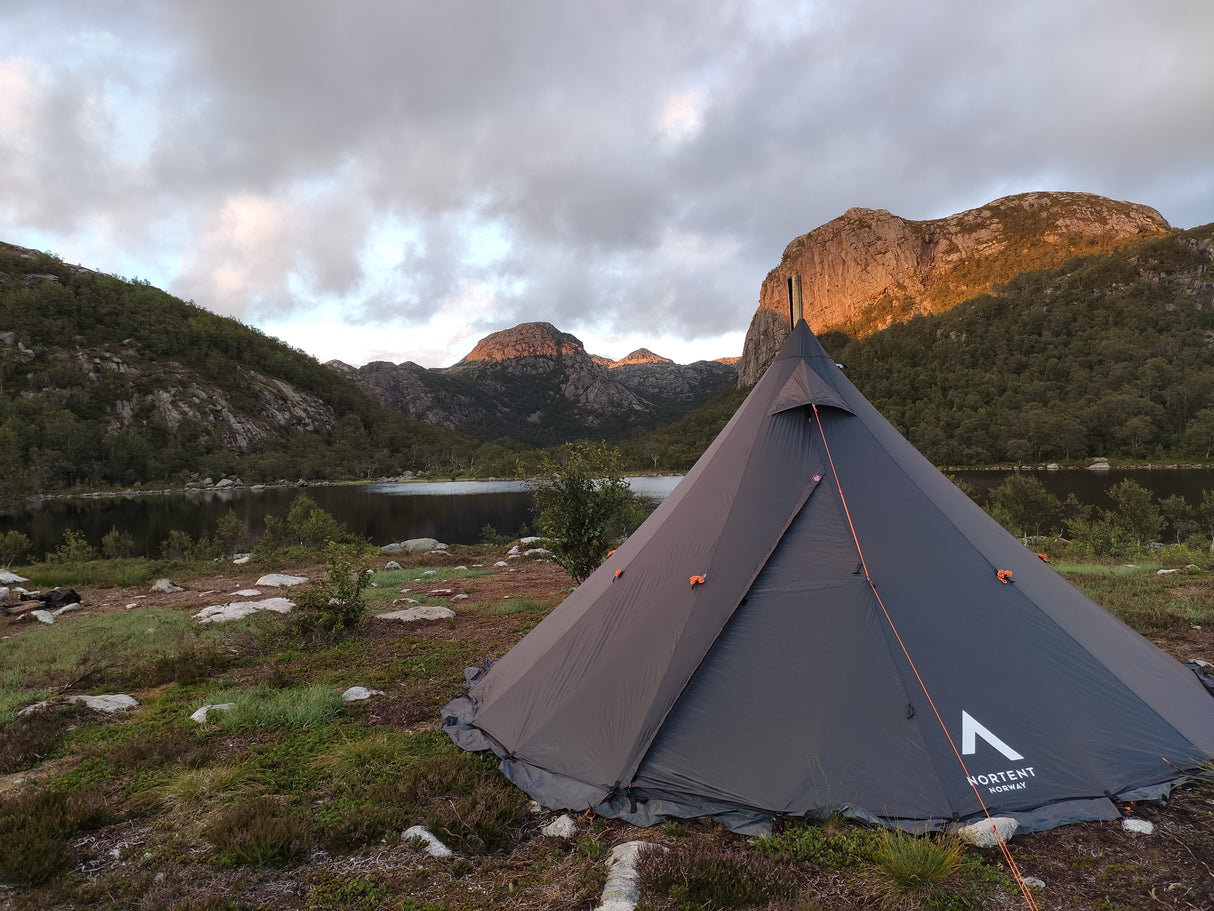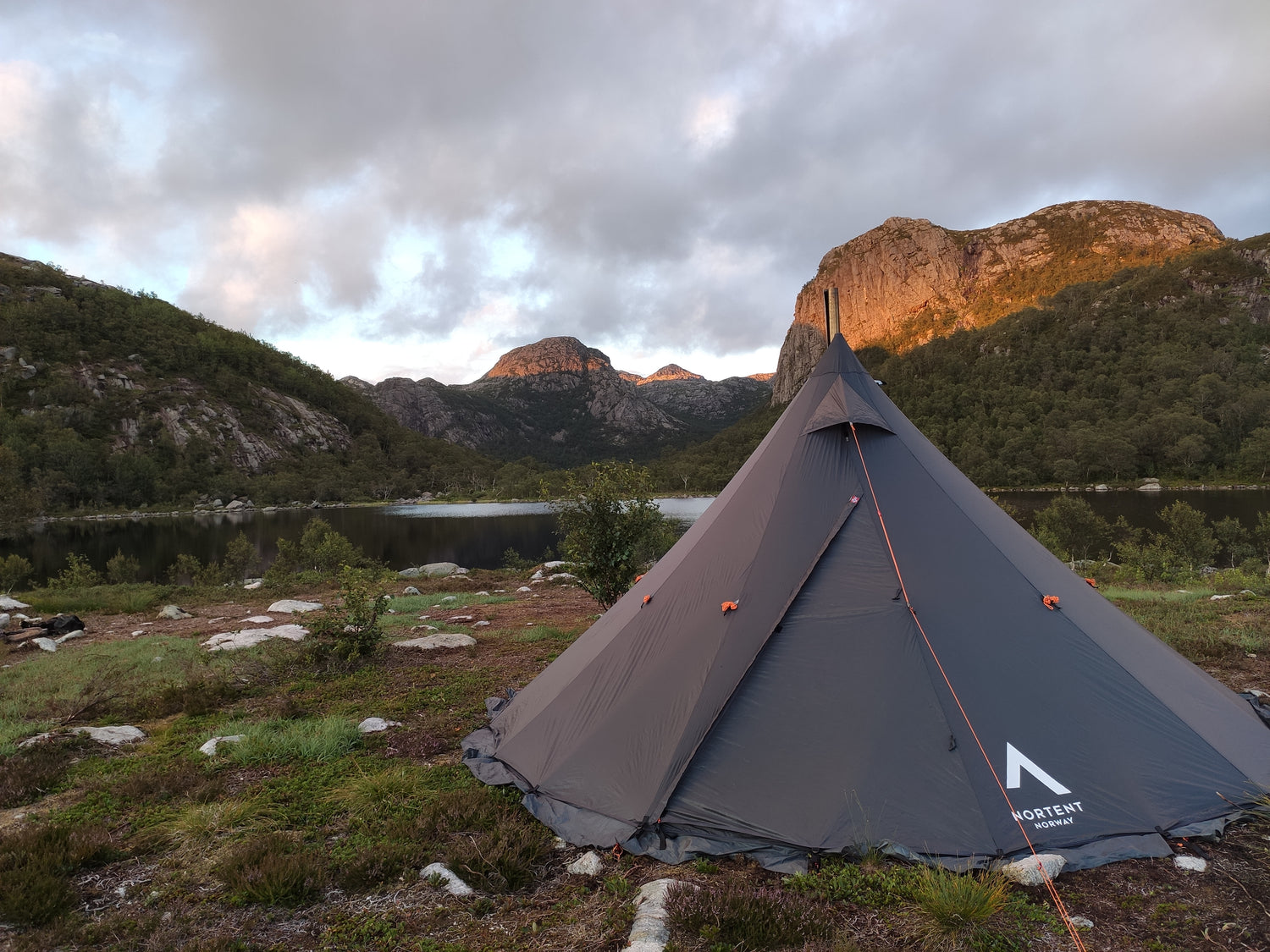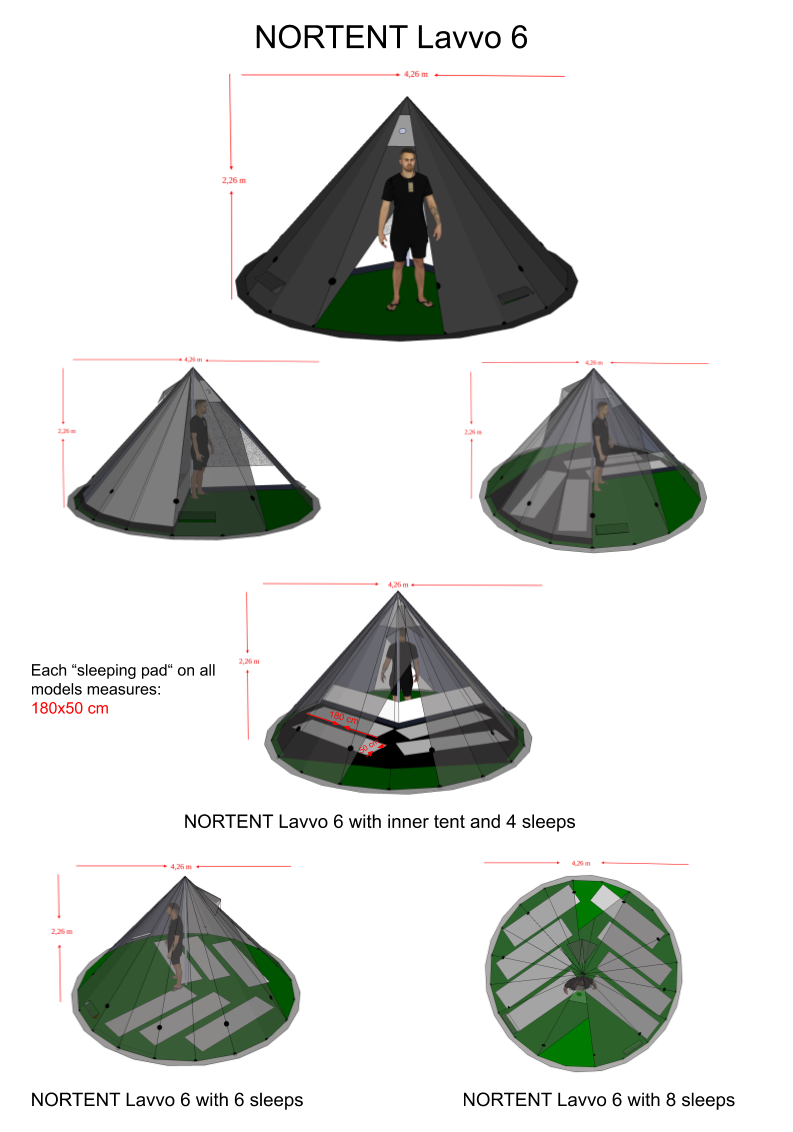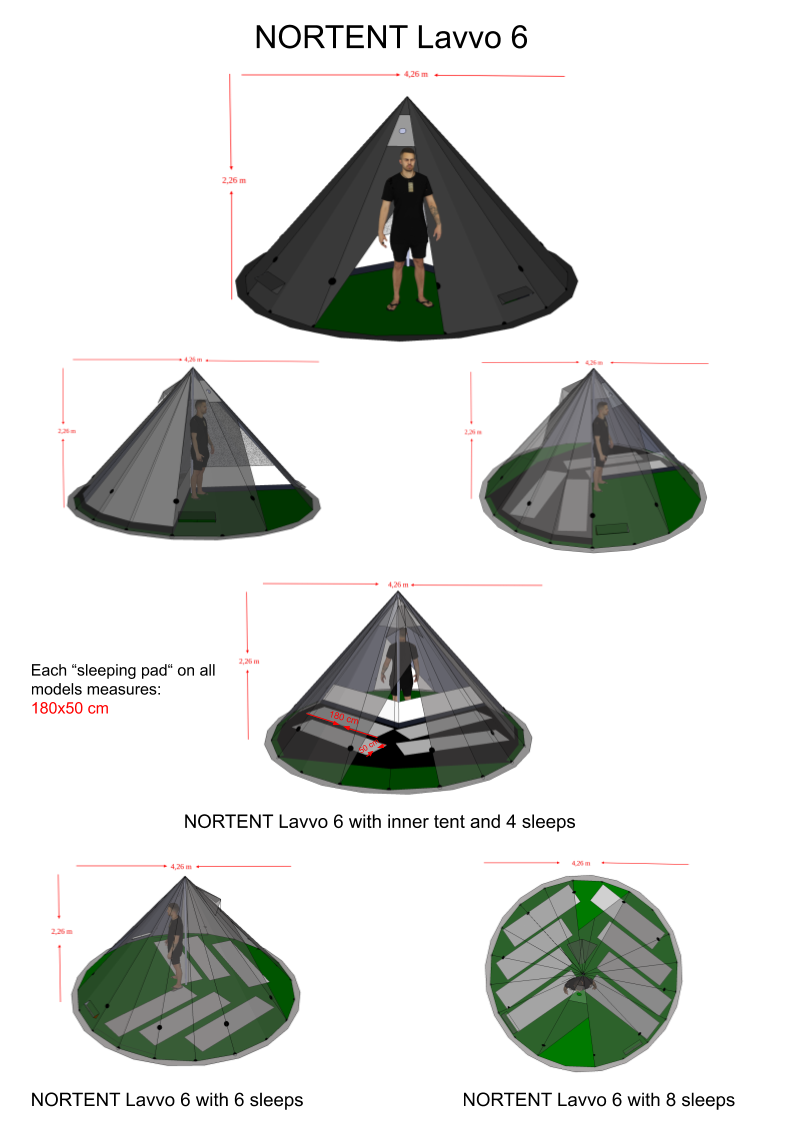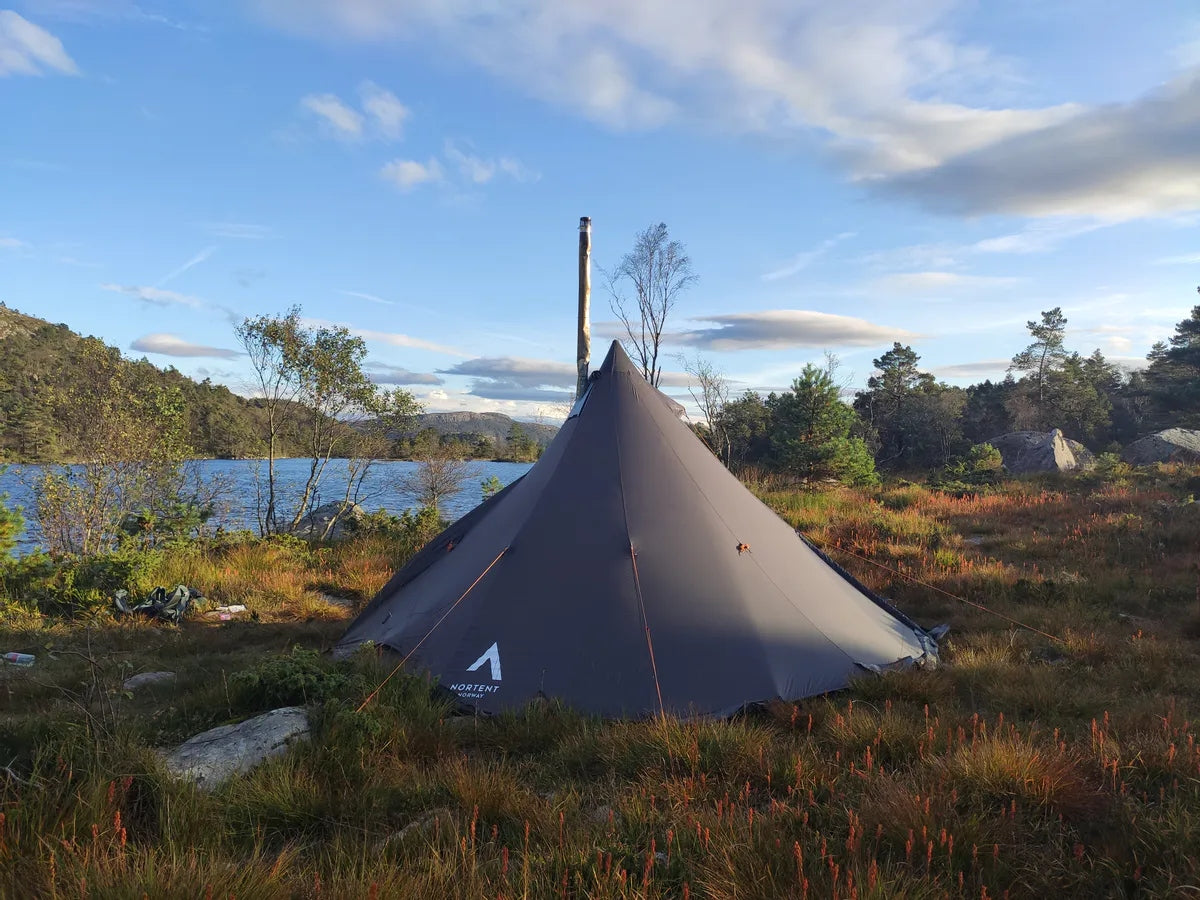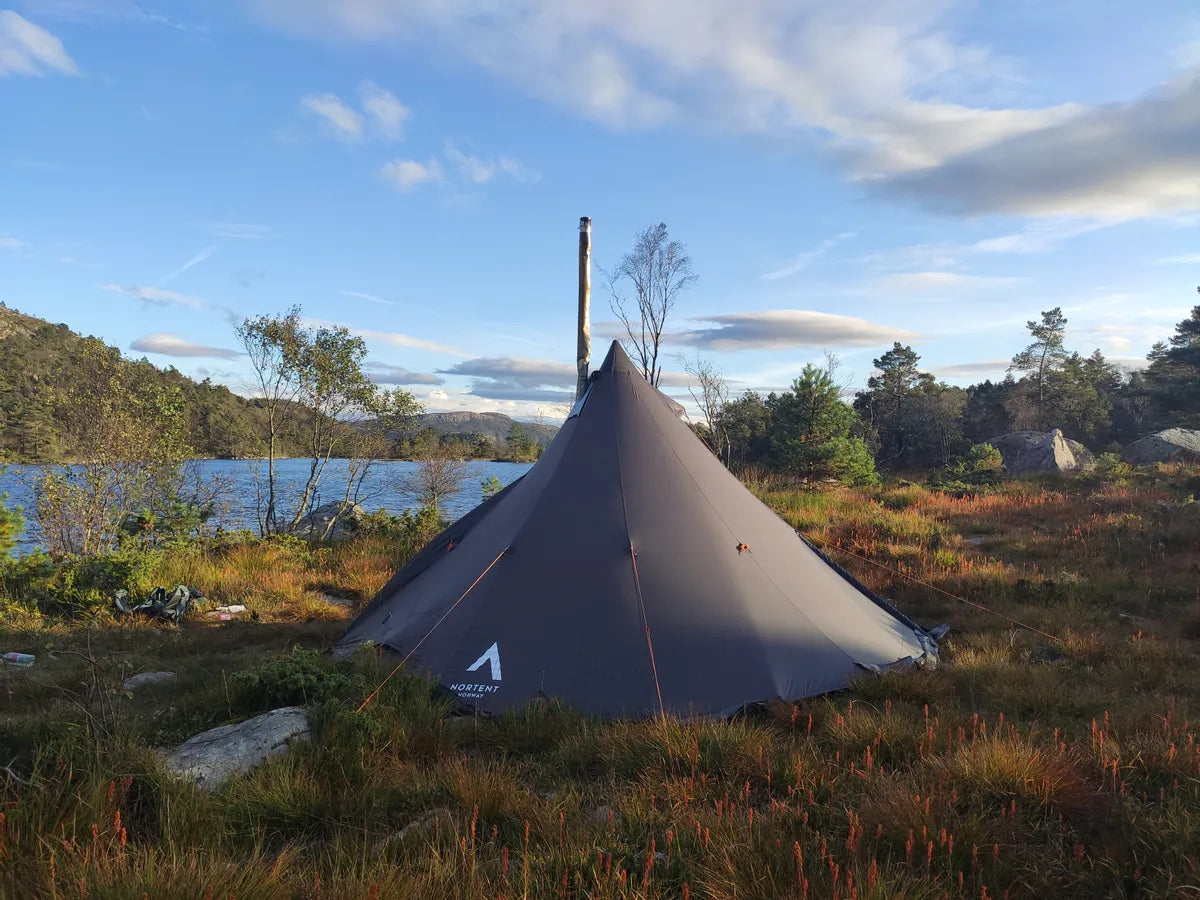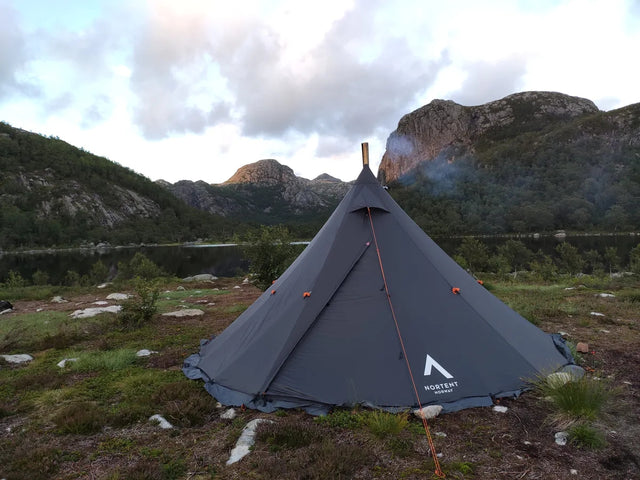Being able to keep warm, dry and safe in a tent is what we all want when hiking the wood or mountains. You as a backpacker should not be worried if the tent can withstand the rain that hails against the canvas during the night.. Our outer fabric of Ripstop nylon 30D, which is silicone coated on both sides, is of course completely waterproof . It can withstand a water pressure of 3000 mm .This is the same as if you shape the flysheet as a pool, you can fill this pool with water where the pool can be as much as 3 meters deep. Try to imagine the flysheet at the bottom of this pool where there is a fairly high water pressure pushing against the flysheet. But still. The cloth stays waterproof.. So far, everything is good.. But this tight cloth gives us a challenge. And it is condensation. There is a lot of moisture from the people who live in the tent, and from the ground. When this humid air hits the colder canvas, the air is not able to carry the moisture, and the moisture is then left as liquid water on the inside of the flysheet. This is condensation. Same principle as when you get into the car on a rainy day. Then there will be condensation on the inside of the windshield . On particularly rainy days, condensation is a major challenge because then the air contains specially a lot of moisture. In addition, if it blows, the flysheet flap in the wind as if it almost feels like “raining” a bit inside the tent. In these cases, many hikers think that the tent is “leaking” since there is an experience that the rain apparently comes through the outer canvas. The flysheet on quality tents is of course waterproof.
Tent fabrics
Backpacking tents are often made from (ripstop) polyester or (ripstop) nylon. Ripstop nylon is generally stronger and is much more durable than Polyester. Both materials need a coating to become waterproof. The wear resistance of the materials also depends on the type of thread thickness used. In general, thicker thread, higher wear resistance. But also, heavier fabric. The above is indicated by the denier of the material. The higher the denier, the higher the tear strength, but also heavier fabric. For example, a 10D flysheet can be very light (also depends on the choosen fabric) and therefor very attractive for the superlight hiker. But this has a direct impact on the durability of the fabric. Our tents has a ripstop nylon flysheet with 30D as we think this is a very good balance between wear and tear.
As mentioned above, the quality of the fabric also depends on the coating the fabric is covered with. The typical tent fabric on cheap tents is often polyester covered with a layer of Polyurethane. This is the cheapest way to achieve a waterproof flysheet. Unfortunately, a flysheet coated with PU is often prone to chemical degradation so that the PU coating simply dissolves over time and the tent becomes anything but waterproof.
Silicone-coated flysheets are something completely different. This is also used for most quality tents. Silicon coating, however, is more expensive than PU. We at Nortent are looking for both durability, safety, low weight and quality. Our choice of material is therefore ripstop nylon coated with Silicon, on both sides. Nylon fabric coated with silicon are also called silnylon. Silnylon is highly water reppelent, elastic and chemically stable over time. This means that the waterproof coating is not negligible over time. If you have invested in an tent made of silnylon, this is probably waterproof throughout the life of the tent. At the same time, silnylon is also significantly stronger, lighter and more durable than fabric coated with PU. Silnylon is also a lot more slippery than fabric coated with PU. And this is not a bad thing. The obvious benefit in this matter is that snow slides very easy off the tent. This is important since snow on the flysheet exposes the tent fabric and poles to unnecessary stress.
The disadvantage of silicone coated fabrics is that they are much more expensive than PU-coated fabric. It is also not possible to attach anything to silicon-coated fabrics. If the Silnylon fabric gets a rift, it is not possible to repair this with, for example, tape. This must be sewn together. As it is not possible to glue anything to silnylon, you can not paste the seams on these tents from the factory. Because nothing is sticking. The only way to make the seams waterproof is to lubricate them by hand with custom silicone that can be bought from us or third party. However, some manufacturers solve this by having only Silicon on the outside of the flysheet while the inside is PU coated. Inside, you can paste /tape the seams so that the seams become waterproof.
On the other hand, we have chosen silicon coating on both sides of the flysheet because this makes the fabric lighter, stronger and more durable, than a PU/silicon combination. Despite that this is a more expensive solution, we believe the quality of the product is beneficial to you, where you have a tent that is both light and durable. Even though a Silnylon tent is sewn in a special way to achieve the most waterproofness in the seam, you must additionally lubricate the stitches by hand with a special silicone solution for 100% waterproof seams. The end result is that you get seams that are very durable to a much greater extent than one by a typical PU-coated / PU-silicon coated tent with taped seams.
Worth mentioning is also that silnylon is somewhat elastic. This means you are able to stretch the tent a few procent . This is a good thing because you “stretch” the tent into place when the substrate is uneven and where you often gets uneven sides. Silnylon also stretches a little bit when it gets wet. This means that the flysheet often gets a little slack when it gets wet, where you have to adjust the tent pegs to get the smooth /straight flysheet back. All our tents therefore have the ability to easily tighten the flysheet without having to adjust the actual tent pegs.
There is also a material that we choose not pay particular attention to here. And that’s Cuben fiber. That is an exceptionally durable material. But the cost here is up to 4 times more expensive one such as a silnylon flysheet. In addition, it comes with its disadvantage where this fabric is not worth it. This material is also found relatively rarely on tents.
CONDENSATION MGMT
However, condensation and moisture inside the tent can be solved in 3 ways:
- Heating the tent. Hot air can “carry” much more humid air than the cold air can. In the same way as when blowing hot air on the windshield of the car to get rid of the condensation on the windshield. Our NorTent Tipi 6 is prepared for the use of an oven. And when using the oven, the air is heated to prevent moisture inside the tent, as well as having a very warm and dry indoor climate in the middle of winter.
- When not using an oven, An inner tent is a great way to avoid moisture on the tent wall because the humid air passes through the walls of the inner tent, where the moisture is then kept out of the inner tent you are living in. The inside of the flysheet, however, becomes again wet as a result of condensation.
- Ventilation is perhaps the best way to avoid condensation inside the tent. Where the humid air is replaced and transported out of the tent before the air loses its water on the tent walls.
As mentioned above, you do not really prevent condensation inside the tent with an inner tent. You just keep it outside the living area. The inside of the outer tent walls may be quite wet. This is noticeable if the inner tent comes in contact with the flysheet on a perhaps rainy day If you do not have an oven, it’s not as easy to heat up the tent. Therefore, good ventilation is perhaps the best way to avoid condensation and moisture inside the tent. If you have good ventilation, the air is constantly replaced inside the tent with new and fresh air, where the humid air is transported out of the tent before it leaves the water on the tent walls. Our tents all have solutions where you have the opportunity to get fresh air into the tent down at the edge of the tent. The air coming in will be somewhat warmer as a result of, for example, the persons staying in the tent. The hot air then rises up and out through air vents at the ceiling of our tent. If your are aware of the ventilation, you can have a very warm and dry indoor climate. But as mentioned. Air MUST come in and air MUST exit the tent. On especially very humid evenings, it is not always enough to only use the air vents. In addition, it may be smart to use the entrances to get enough air flow through the tent. Both Nortent Lavvo 6, Nortent Hedda Extreme 4 and NorTent Helena Extreme 2 have entrances at both ends of the tent, to effectively control the indoor climate in addition to the air vents.
Ventilation is also important on hot days. It can be directly dangerous to stay in the tent on a hot summer day where the dense outer fabric makes the tent close to a baking oven. With the big living space and the air ventilation in our tipi, however, you can stay in the tent on very hot days since the ventilation here will be optimal. On these days you may experience a comfortable breeze inside the tent where air entering is quickly heated, rising and disappearing from the tent through both air vents and entrances while staying inside the inner tent shielded from for example Mosquito and bugs.

